#anti-Tom Taylor
Explore tagged Tumblr posts
Text
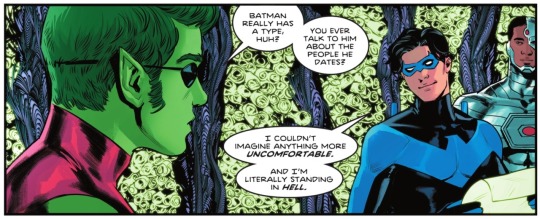
Once again Tom Taylor writes Dick as the Nice Jokster by making him invalidate Dick's important connections. Dick has been involved in Bruce's love life. He feels with Bruce when Selina breaks up. He notices the romantic tension between them. So much so that he constantly gets used to validate BatCat in fandom and in canon! Dick was also there when Talia lived with Bruce. He was so up in Bruce's love life that he ran to Selina.
What is it about inter-character connections that Taylor hates so much? Why can there be no emotional beats? Why does Dick have to be flatter than a sheet of paper?
It's not "cool" to be involved in your mentor's love life and that's why Dick can't be, but he is. Dick cares so much. How much Dick cares about people is a huge if not the biggest part of his character and sometimes that care brings pain and conflict -- two words Taylor screeches at as if he's a vampire faced with a crucifix.

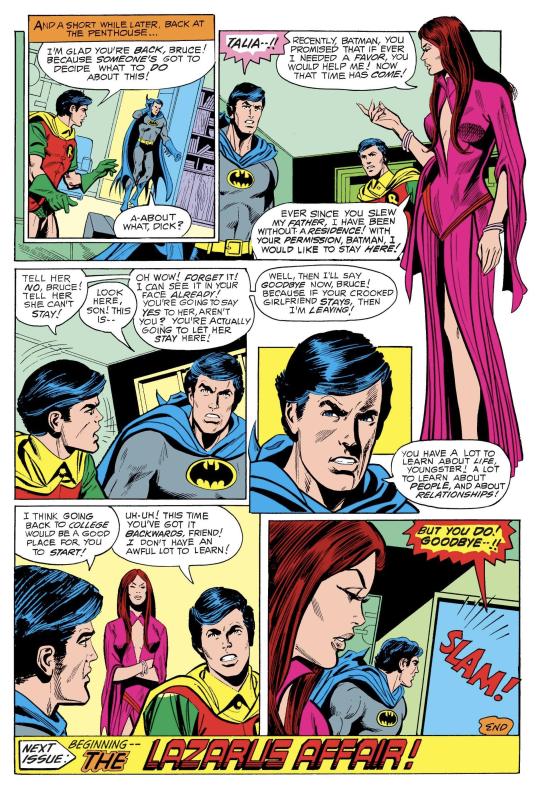
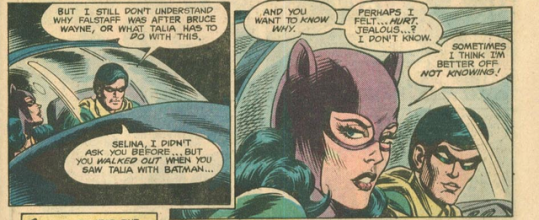
#nightwing 103#batcat#brutalia#dick grayson#bruce wayne#selina kyle#talia al ghul#anti-tom taylor#anti-taylondo
36 notes
·
View notes
Text
Seeing pics from Titans Beast World, and, just at what point do Dickkori fans realize Tom Taylor and DC is literally just treating us like garbage. It’s like the creators of Avatar insulting Zutarians, actually no, it’s exactly the same thing, cause Bryke left the Netflix after they were told Katara and Aang’s actors wouldn’t kiss each other. And Taylor loves to block and blame Dickkori fans for criticisms he gets. No dude, Bryke at least made a compelling show with flaws in how they view relationships in media. You write pandering crap without growing characters and espousing white virtue without knowing the first thing about the things you say you’re against. You’re only afloat because DC gives you good artists, a beloved character and you’re only popular because you wrote a dumb zombie comic at the height of that zeitgeist and did Injustice, which shows your lack of understanding of human relationships and ethics. One person, just one days and that’s all it takes for Clark to snap? I may not be a huge Superman fan, but when I think you’re doing him worse than a Synderverse movie, get lost.
#anti-Tom Taylor#Dickkori#sorry but really guys it’s literally a tease#it’s what they did with vampires#it’s what they did in titans academy but with Babs instead#they treat all three characters like crap#and the ppl who like them even worse because of the drivel we let them spew#Taylor should be put on hard traveling heroes with how he writes about social injustices#and the saddest thing is he’s still not my least favorite Nightwing writer by a long shot#yet still the second worse
9 notes
·
View notes
Text
Friendly reminder that DC and Dickbabs writers are gaslighting you into thinking Dickbabs are childhood sweethearts that are always in love with each other since day 1.
Dickbabs is the most superficial manufactured by retcons ship.
Babs was deaged for this crap to work.
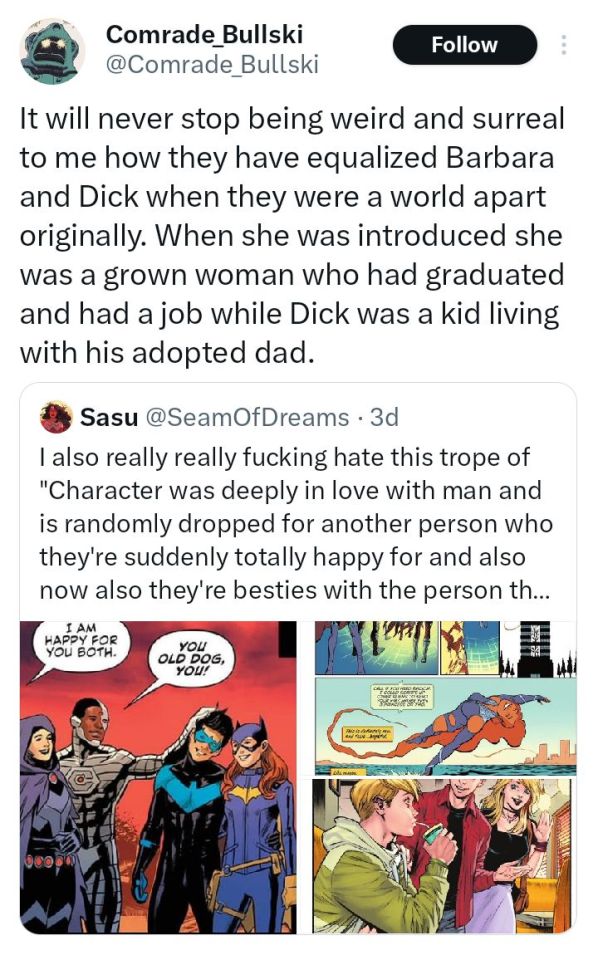
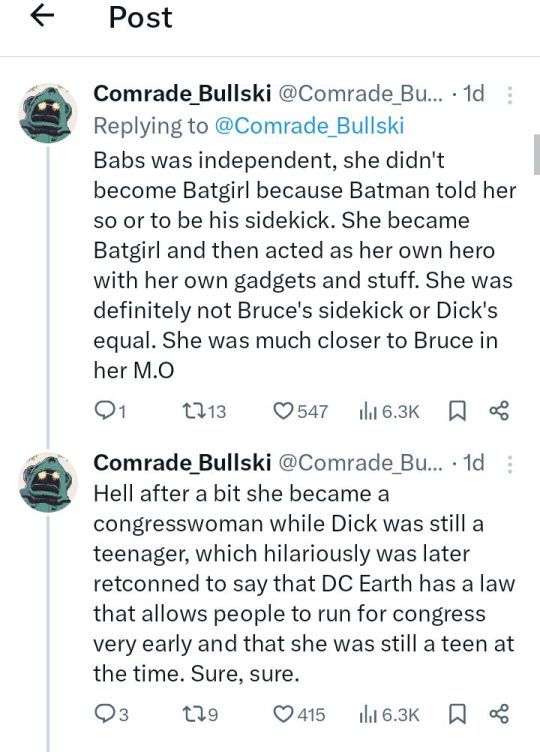
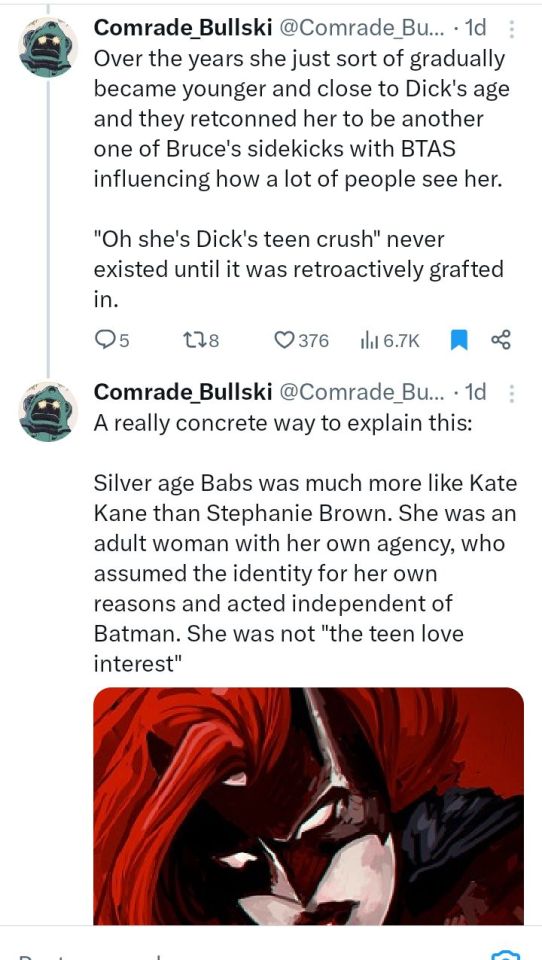
Here is Original Barbara Gordon working as a congresswoman in the Senate when Dick was just the little kid Robin.
She was much closer to Bruce and Clark's age than Dick's.

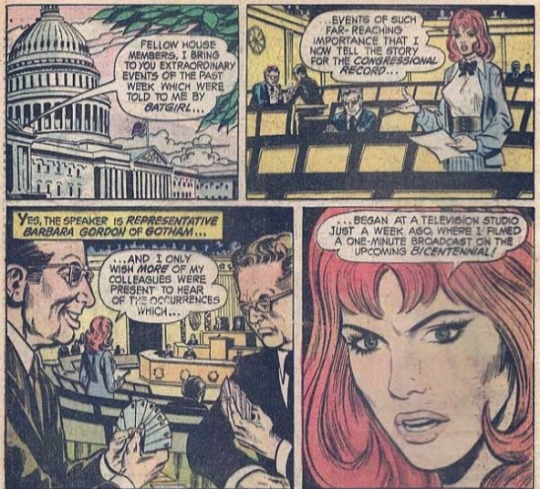

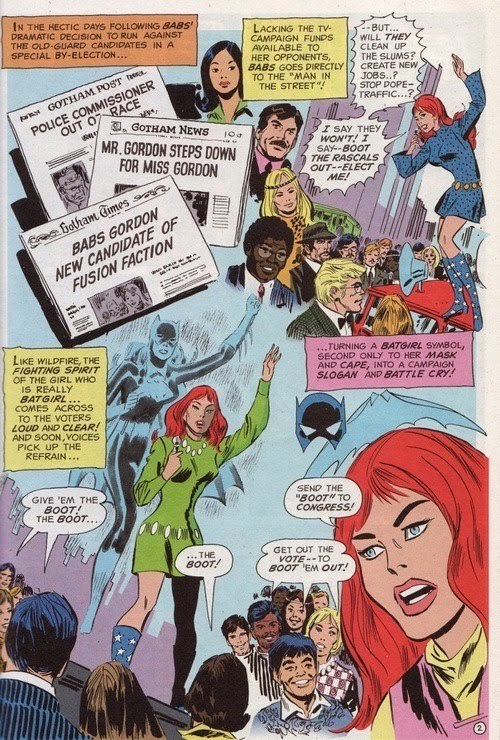
Barbara refers to Dick as a "kid" and "little brother.
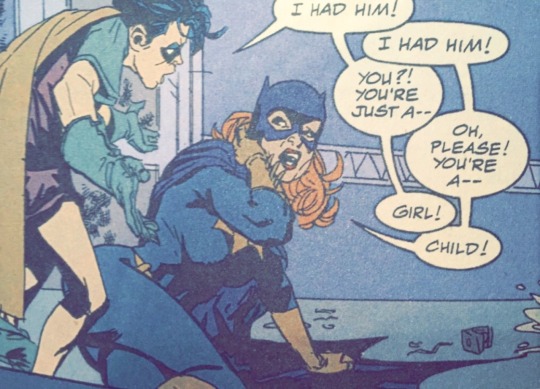
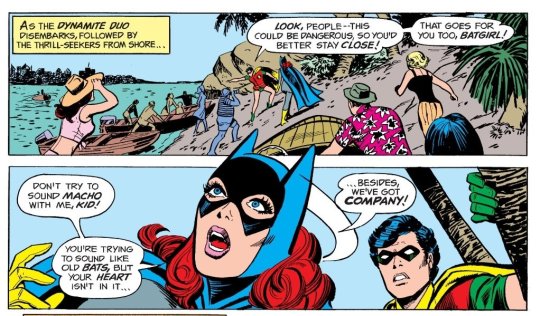


Dick had a small puppy crush on her but it was seen as a precocious crush. It was controversial when they first kiss (to make Dick shut up) because it involved a grown ass woman kissing a teenager.
Dickbabs was hated the same way modern Brucebabs is hated today.
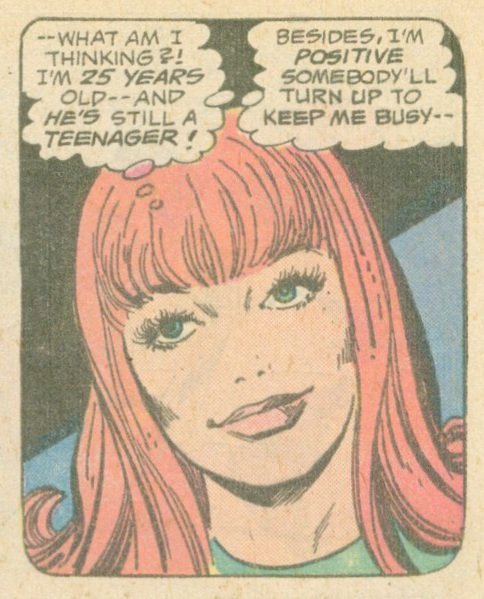

Even the writer of that book admitted he never intended for them to become a couple.
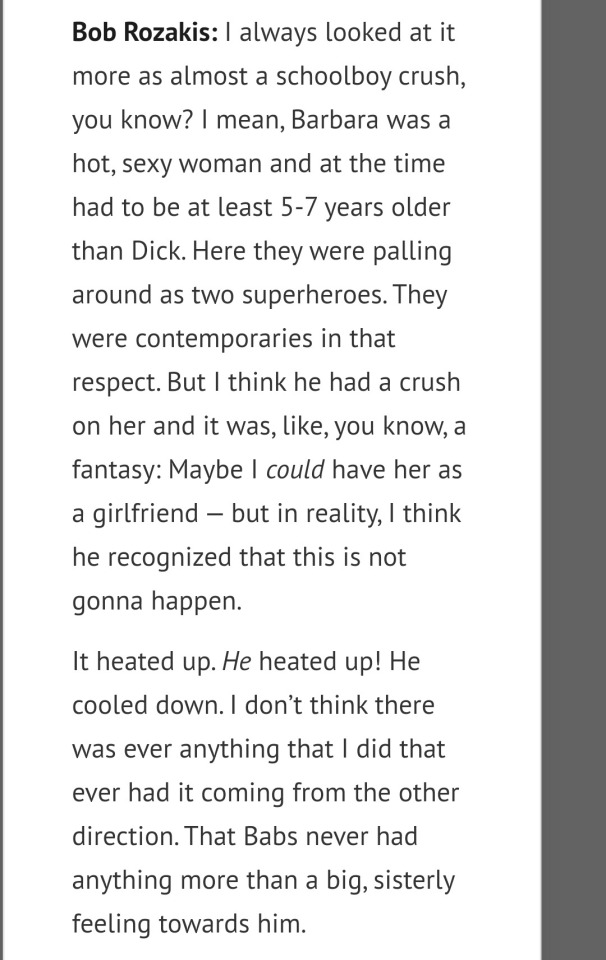

Babs was more into older guys.
- she was viewed as an equal love interest to Batman
- she went out on a date with Superman
- then got engaged to her coworker Jason Bard.


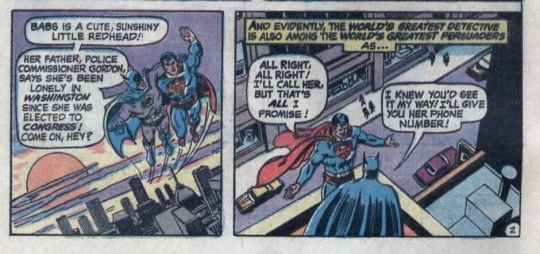
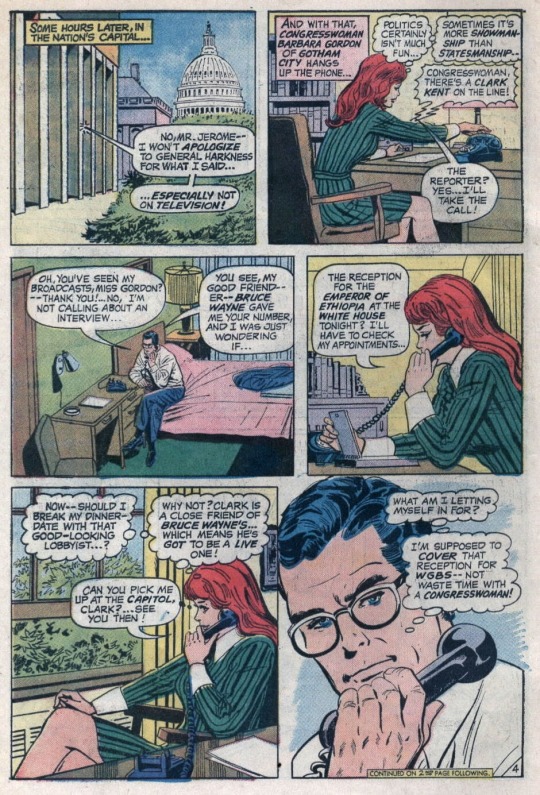
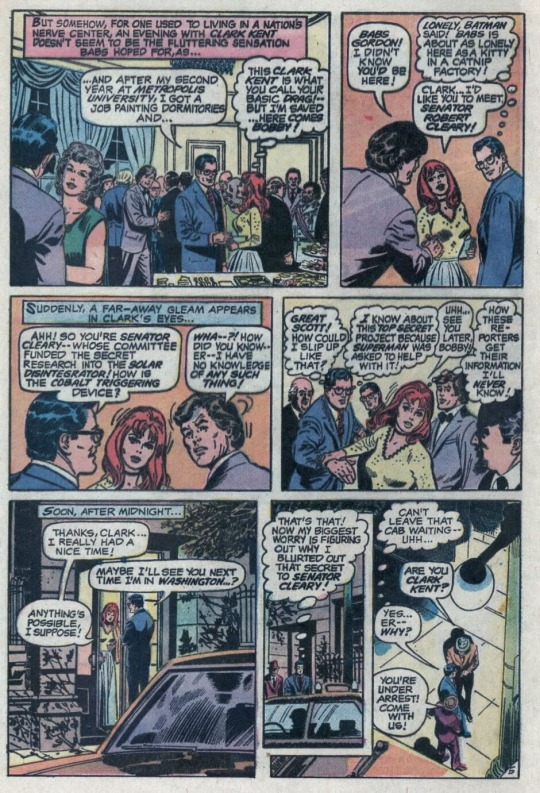

Dickbabs shippers always try to deny that Babs was deaged and her history was altered for dickbabs in an effort to defend their ship.
They say it's not true because according to them Babs has been deaged long before dickbabs became a couple.
Here's the thing though:
Babs has been deaged twice.
Just because she wasn't deaged to be with Dick in her 1st deaging doesn't change the fact that she was deaged to be the same age as him in her 2nd deaging which happened in dickbabs content.
The 1st time she was deaged was in Crisis on Infinite Earths, it was so Jim could be younger but they only decreased her age slightly because she's still written as older than Dick, here is a panel from Secret Origins #20 that was published in 1986 exactly 1 year after she was first deaged in Crisis on infinite earths (1985) she said Dick is too young for her and that batman is always the one on her mind. So Dickbabs during this time still couldn't work because they still have that age gap and Babs was still into Bruce.


The 2nd time she was deaged is in dickbabs comics and tv shows where she was finally made the same age as Dick so dickbabs can finally work as a romantic pairing.
Instead of being older, she's now written as a part of Dick's generation.
From a congresswoman to a young girl who went to highschool prom with Dick.

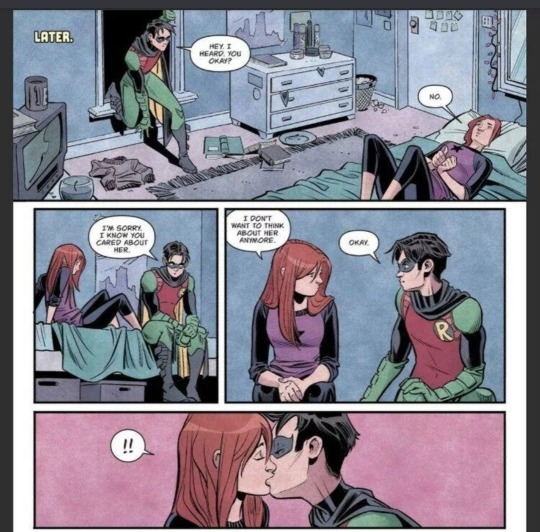

Even Tom Taylor had the two first meet when they were young little kids so he can also portray them as childhood sweethearts in his run.
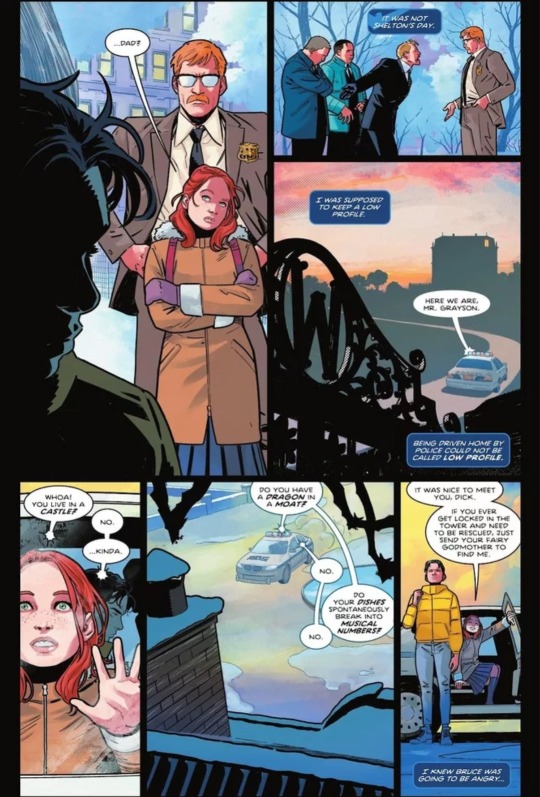
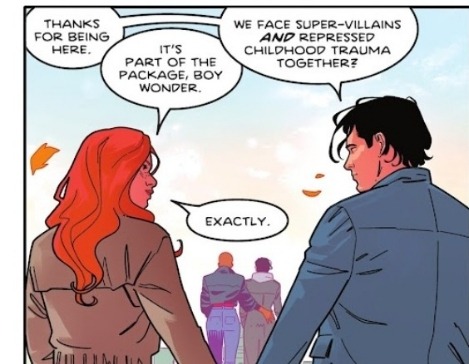
Tom Taylor claims Barbara still has a law degree but isn't it sad how instead of using that degree to find an actual job, she wasted her time following Dick around like a dog in Bludhaven ?
She has no job of her own, no friends of her own, no hobbies of her own outside of Dick.
She's just Dick's clingy lovesick girlfriend who is a total standby for him in his solo books.
Dickbabs shippers who deny this and get mad at people who point this out are the people who don't care about Barbara Gordon as an individual.
They don't care that Barbara lost her PHD degree, lost her own career, lost her own agency, lost her history, lost her self identity for the sake of shipping.
Their only concern is defending dickbabs and making it look better.
Because if they truly like Barbara separately from Dick, all these valid anti-dickbabs criticisms wouldn't bother them.
What's even funnier is that they are the very same people who accuse Starfire of being reduced into Dick's love interest despite the fact that Starfire hasn't been in a relationship with Dick in the comics for 20+ years due to the fact that dickkory's history was ignored and erased in favor of dickbabs. NASTY HYPOCRITES.
At least Starfire wasn't deaged to fit Dick and you can never see Starfire following Dick around like a dog in his solo books 💀
#dickbabs#barbara gordon#dick grayson#batgirl#nightwing#robin#antidickbabs#anti dickbabs#anti tom taylor#starfire#dickkory#batfamily
591 notes
·
View notes
Text
A (Negative) Analysis of Tom Taylor's Nightwing Run - Introduction
Introduction Who is Dick Grayson? What Went Wrong? Dick's Characterization What Went Wrong? Barbara Gordon What Went Wrong? Bludhaven (Part 1, Part 2) What Went Wrong? Melinda Lin Grayson What Went Wrong? Bea Bennett What Went Wrong? Villains Conclusion Bibliography
I want to start this essay by admitting I’m actually embarrassed by its length. Why did I spend so much time on something I dislike? The truth is, I did not begin this with the intention of creating such an extensive, formal study of the Tom Taylor and Bruno Redondo’s Nightwing run and how it reflects the wider problems with DC’s handling of one of their most iconic characters. I was just trying to organize the thoughts that came up during discussions with other Dick Grayson fans. Before I knew it, I had enough material, enough desire to challenge myself, and enough frustrations to vent to properly create this monstrosity.
I did not begin this Nightwing run determined to hate it. In fact, I was ready to love it. As Taylor promoted the run before the first issue was officially released, I was so excited for it. As I read short interviews where he discussed Heartless, I could not wait to have a new, incredible villain. Foolishly, I believed Taylor when he said he loved Dick Grayson.
Needless to say, I was disappointed. Then frustrated. Then angry. The beginning of any story is a period where writer and reader form an indirect bond, and as the story progresses, so do the highs and the lows of said relationship. As such, a reader’s tolerance for negative factors will either increase or decrease depending on their experience up until that point.
In other words, if the writer fails to earn the reader’s trust and instead takes their attention for granted, even seemingly insignificant details become irritating in a way they would not be if presented in a better story. In such scenarios, the reader can no longer overlook those minor moments because there’s little good to balance them out with. It is a death by a thousand cuts.
In the case of Taylor and Redondo’s run, along with those thousand cuts are also broken bones, internal bleeding, head trauma, and severed limbs. A weak plot, simplistic morality that undermines the story’s stated themes, and, most importantly, a careless disregard for Dick Grayson and everything he stands for utterly destroyed my enjoyment of this series.
It is still too early to tell what sort of impact Taylor’s (as of time of writing, still unfinished) run will have on Dick Grayson’s future portrayals. But just because we cannot predict its long term significance, it does not mean we cannot critique it. Currently, we simply lack the benefit of hindsight.
If this essay were to have a thesis, then it is this: Tom Taylor and Bruno Redondo’s Nightwing not only fails to tell a compelling Nightwing story, but it also exemplifies a cynical, self-serving, and shallow approach to storytelling that prioritizes creating hollow viral moments to boost the creators’ own online popularity over crafting a good story, honoring the character in their care, and respecting his fans – fans who have, historically, often been women, queer folk, and other individuals who felt othered by a cisheteronormative patriarchal society. Taylor and Redondo’s thoughtless and superficial narrative not only undermine the socially progressive ideals they supposedly care for by propagating a cisheteronormative patriarchal worldview, but they also demonstrate a lack of love and understanding for the character in their care. At best, Taylor and Redondo have no interest in getting to know Dick Grayson, nor any respect for their predecessor and their contributions to this character. At worst, they despise Dick so much that they wish to reinvent him into something completely different, tossing away everything that was special to his fans in order to appeal to a readership that never cared about Dick Grayson.
I structured this essay so that, hopefully, each part will build on the ones that came prior. Naturally, because all aspects of a story are interlaced, there will be overlaps between each of the sections. As it may have become obvious from this introduction, I’ll be focusing primarily on the writing of this run. That is not to say that I will not address the art, but writing is the field I know most about, and so it feels only fair to focus my critique on that.
I hope that by the end of this essay, I will have successfully proved that this run’s mishandling of different narrative elements betray a cynical appropriation of progressive ideology and a disregard and disinterest in what makes Dick Grayson so special to so many people. This is an attitude that is present within DC Comics’ current ethos as a whole.
Now, who is this essay for? Honestly, it’s probably not for Tom Taylor fans. I do not believe I’ll be persuading anyone with my writing, and, to be quite honest, neither would I say I wish to do so. Taylor and Redondo’s run has won numerous awards and has many dedicated fans who adore it for what it is. If that is you, then I’m glad. I wish I could be among your numbers. I wish more than anything that I could love this story. But I do not, and I know many others agree with me, and it is to them, I think, that I’m speaking to. As Taylor’s run is praised to heaven and back, I needed a safe space to voice my thoughts. This essay became this safe space. And to others who also feel unseen by the constant praise this run is getting, I think this could speak to you, as well. To be cliche and cringe, this will hopefully let you know that you are not alone.
Finally, I want to acknowledge some people whose thoughts greatly contributed to the creation of this essay. For around three years now I’ve been having wonderful interactions with other Dick Grayson’s fans, and those discussions were not only incredibly fun and cathartic, but also provided great insight into what needed to be included in this essay. My best friend especially gave me a space to vent when I got frustrated, and my original outline borrowed a lot from the messages I sent her, as well as notes I took for our discussions.
I’ll also be directly quoting four different Dick Grayson fans (identified as Dick Grayson Fans A, B, and C in order to allow them to keep their anonymity). Their analyses were so critical to the formation of my thesis and for a lot of what will be addressed in this essay that I actually feel like they deserve co-credit in this essay. Dick Grayson Fan B especially deserves a shoutout in helping me track down a couple of pages used as supporting evidence, as I knew what pages I was looking for but was having a hard time remembering in which issue they were located. I’m quoting them with permission, and crediting their ideas and contributions whenever relevant.
Now, without any further ado, let’s get started.
736 notes
·
View notes
Text

#memes#my memes#my edits#funny edit#funny memes#dc comics#dc#comics#comic books#dc memes#i made this#batkids#batfam#batfamily#batboys#nightwing#nightwing comics#funny#bruce wayne#batman#jason todd#red hood#humor#anti tom taylor#batman characters#comic characters#media analysis#comic analysis#nightwing 2016#nightwing 1996
398 notes
·
View notes
Note
why are you all fantasising about killing a puppy? like genuinely is that not weird to you at all lol
Oh boy. Hmm. Look, first of all, Haley is a fictional dog in a fictional universe, and many people the world over have fantasized about many different characters dying for many different reasons in many different universes. This one just happens to be a dog. It's the same idea as someone wishing Deathstroke or the Joker was dead (Haley isn't human or a villain, but the main concept? It's still the same).
Attempt at explaining why, however, is under the cut.
I'm not sure if I'm the person to explain this, but I'll do my best. It's not so much about the dog herself as much as it is about how and why the dog came about and what the dog represents. Haley was created by Tom Taylor and came about seemingly out of nowhere. Dick hadn't expressed any desires to have a pet and has never had one previously (I'm not counting Ace who would have been a family pet and not his sole responsibility) this dog was introduced seemingly out of left field and was one of the first things Taylor did. It was an attempt to make Dick look responsible and to have a dog function as a stand-in or trial kid for the Dickbabs relationship Taylor was bringing back. By giving Dick a dog, he was implying that Dick was reaching the point of being ready to settle down and start building a family. Once again a concept that didn't seem to be fully formed or realized before being introduced.
One of the biggest criticisms people have for Taylor's run is just how out of character everyone seems. Dick has always been a character on the move. Even when settled in Bludhaven longterm (NW 96), he was constantly seen on the move, no one could get him to slow down and talk. Which became one of the main reasons he and Babs broke up during that run. A lack of communication coupled with Babs' insecurities made for a foreshadowed ending to their relationship. But instead of any foreshadowing, Taylor gave Dick a dog in his first issue (already a major change) and also brought Babs back as the second main character in an attempt to show that Dick was ready to settle down and settle down with Babs specifically. A move that lacked any of the "show" portions in the show don't tell writing theory.
In addition to all of that, Haley is very WFA-esque, too cute and happy for main universe DC. Haley's whole existence is built around looking cute and showing that Dick is ready for a "serious" relationship, she has no other purpose. The main reason people complain about TT's run being WFA like? Lack of personal conflicts and Haley.
Haley is a symptom of the problem, but also in a lot of ways a core building block of the problem. Get rid of the dog and the house of cards: ooc writing, too happy characters, lack of real stakes; it all falls down. The stakes are higher again, the relationship is less stable (and also less confirmed in our face endgame), and the environment is less WFA more DC.
I've said it a million times and I'll say it again:
It's not about the dog. It's about what the dog represents.
#kill haley the dog#anti tom taylor#anti dickbabs#tw animal death#look haley isnt real. thats the main thing. shes a fake dog in a fake world#its not about the dog#but it is a little#anon asks
82 notes
·
View notes
Text
the concept of Bruce in a Nightwing suit is probably the most infuriating thing that could happen. I fucking despise it from the bottom of my heart.
First of all, the whole fucking point of Nightwing is that he surpassed Batman, why are you putting the guy he surpassed in his costume ?
Second of all,in canon right now, Bruce Wayne fired Dick from his first costume and gave it away to someone else without his consent, he has zero right to touch his second costume at all.
338 notes
·
View notes
Text
I'm actually glad Cregan was spared from that shitshow

#awful awful awful episode#mess of a season#<- I’m being generous#it’s so joever#tori talks#hotd#house of the dragon#anti hotd#hotd spoilers#house of the dragon spoilers#cregan stark#house stark#tom taylor
127 notes
·
View notes
Text
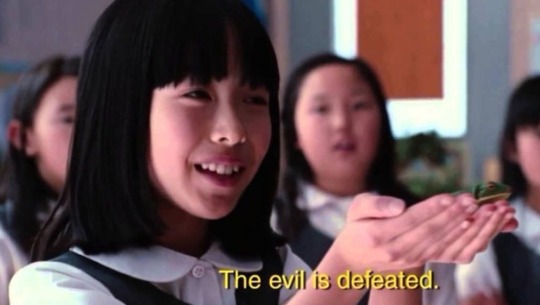
#truly not shocked the sales were going down even his fans were calling it boring/mid + all the discourse#I truly do not think he expected + I honestly think he didn’t want nw in the first place 😭#we’re probably gonna have to deal w like a bb solo or something from him unless he’s jumping ship to marvel again 😔#anti tom taylor#dick grayson
224 notes
·
View notes
Text
Everytime one thinks Tom Taylor can't hit a new low, he does. It's incredible to see a male writer be so egoistical and self-obbsessed in 2024 and get praised for it because he's chasing clout by including social topics in his writing.
#meanwhile he transformed DickBabs into the most 90s sitcom couple possible#not that that wasn't a problem before#anti-tom taylor#anti-taylondo
8 notes
·
View notes
Text
So from what I’ve seen, Wally West fake out death, Garth being a member of a blood cult, so which Titan that Taylor “loves” is he going to do his BS with next?
#anti-Tom Taylor#Teen titans#I know he tends to only do those type of endings#but they aren’t even cliff hangers it’s like takeouts#and dead Wally west followed by Brother Blood yippie#two of my favorites from DC
5 notes
·
View notes
Text
I have a theory that Tom Taylor copied/took a lot of inspirations from Dickkory.
I may or may not be wrong but I just can't help but notice the timing and the similarities. A lot of things in dickbabs relationship are not very original at all. Most of the time they just steal concept from other couples.
Now going back to Tom, I suspect he was in a lot of social media apps (twitter, reddit, instagram etc) and secretly lurked in nightwing fandom groups and have read their posts and conversations etc. including about dickkory.
1. The concept of visiting his parents' grave
This panel of Kory and Dick showing up in his parents graveyard was shared in the Nightwing subreddit 1 month ago. How come 1 month later Tom wrote a similar thing for Dick and Babs?
Also notice Dick told Kory "You shouldn't be here" but Tom wrote Dick telling Babs "Thanks for coming here" it seems to me Tom really saw the kory comic and wanted to make the dialougue different for dickbabs to make them look better.
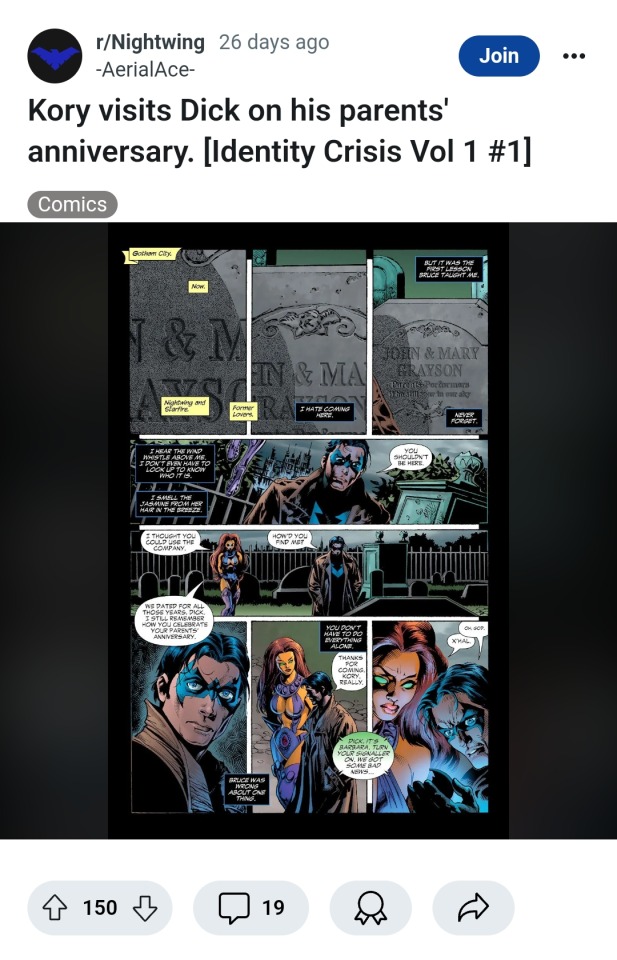
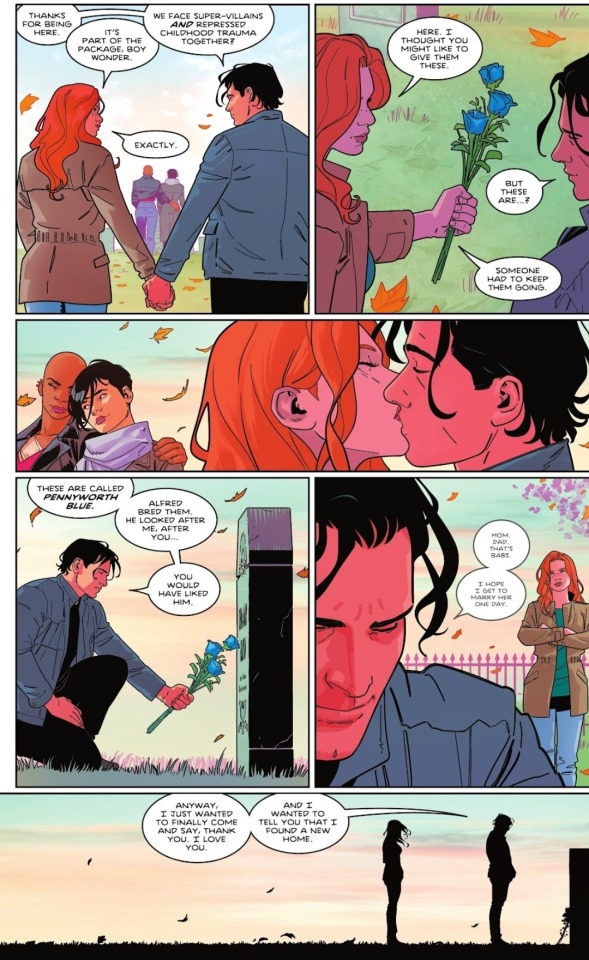
2. The concept of wearing each other's superhero costumes.
This fanart of dick and kory exchanging costumes was created by Laurarts on March 4, 2024, it went viral on twitter and it was also shared on the nightwing subreddit.
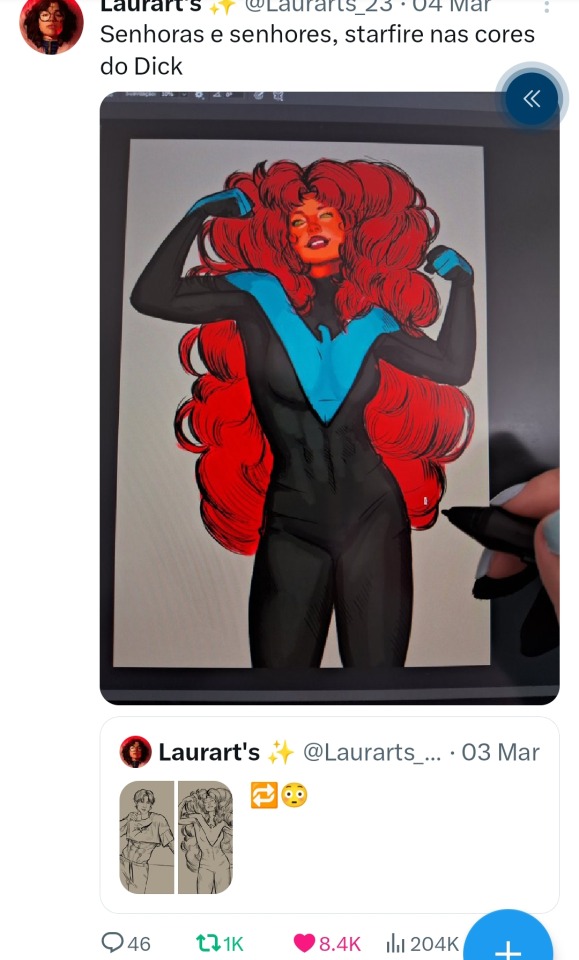
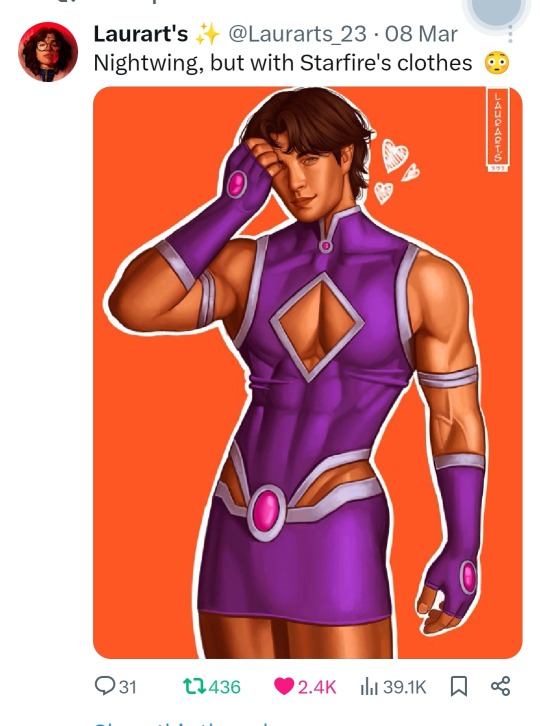
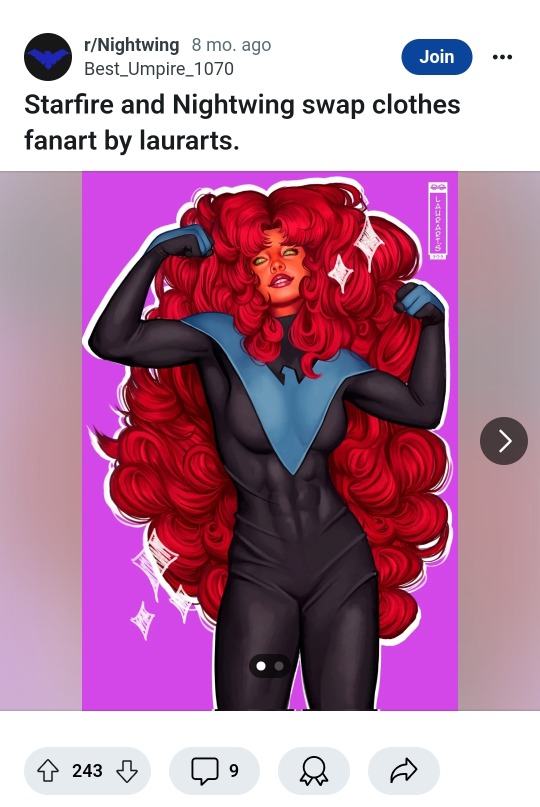
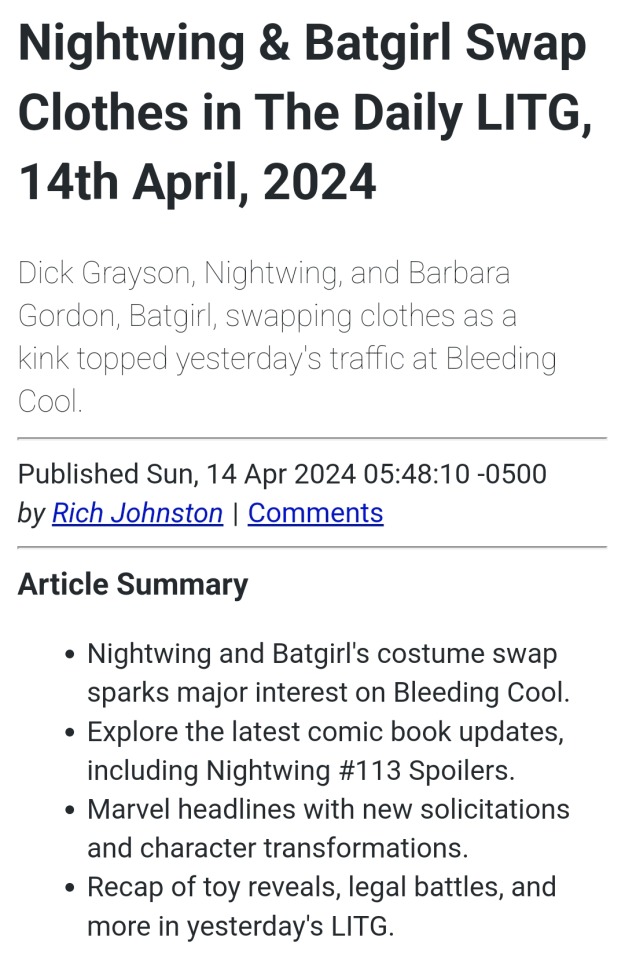
How come 1 month later Tom Taylor wrote that Dick and Babs wear each other's costumes too in Nightwing #113 that was published in April 17, 2024. 💀.
3. The concept of being freaky
Now my suspicions of Tom stalking and copying Dickkory content was solidified when he literally posted this gif of Dickkory from the DCAMU, notice how Dick and Babs started acting horny and freaky in his run after he tweeted this and Babs started teasing Dick and making sexual jokes to him like Kory does to Dick in the dcamu. 💀💀💀
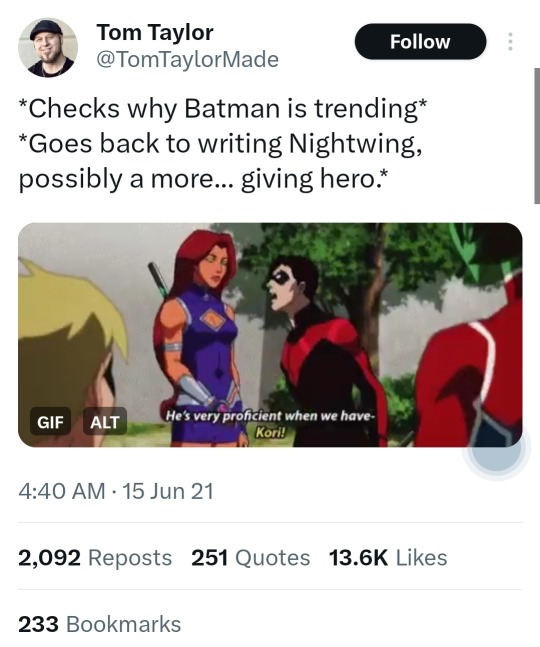
4. The concept of A crowd of heroes watching them.
I remember a year ago I posted this screenshot of an article discussing the original plan for dickkory in reply to a thread where Tom Taylor got tagged by the person i was talking to. The person was a dickbabs shipper who insisted NTT dickkory was bound to fail, I told OP it's not true, i showed her this screenshot of the article that discussed the original wedding plan for dick and kory and where it also says a crowd of heroes would watch Dick and Kory. How come a few months later Tom Taylor wrote this dickbabs wedding scene in his run and made a crowd of heroes watch dickbabs too??? 💀
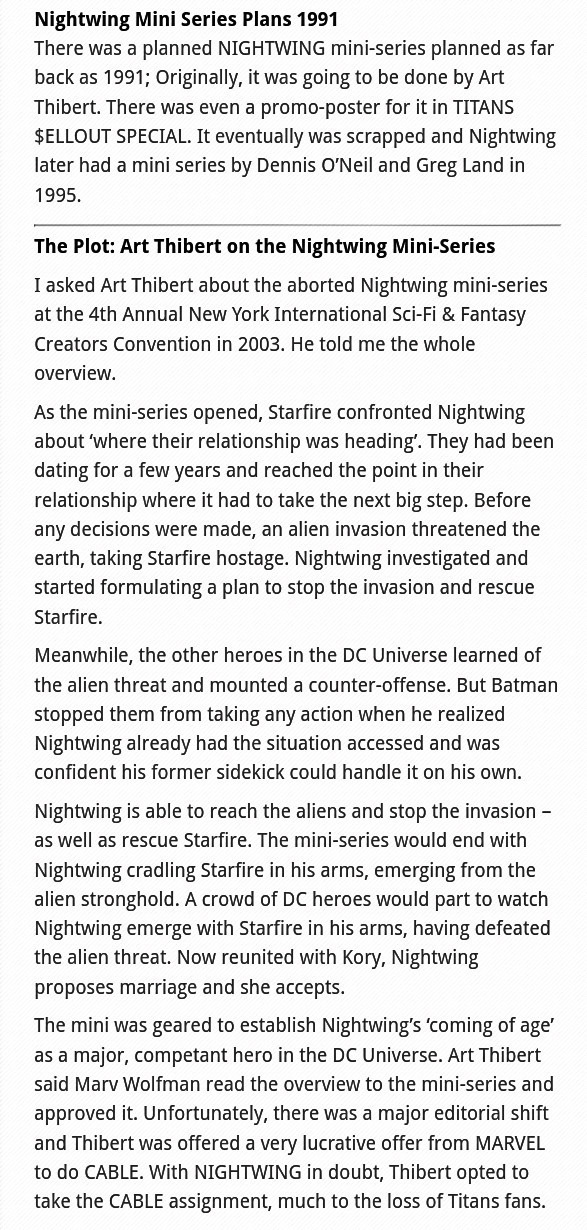
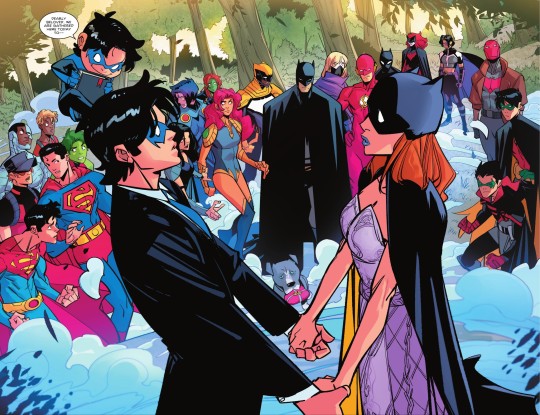
5. Wally being a shipper
This panel of Wally in Teen Titans Academy #9 being a Dickkory shipper was published in December 14, 2021, how come a few months later, Tom Taylor wrote Wally being a dickbabs shipper in Nightwing #91 (April 19, 2022). Wally felt ooc because he never once talked about dickbabs before tom wrote him in his book💀
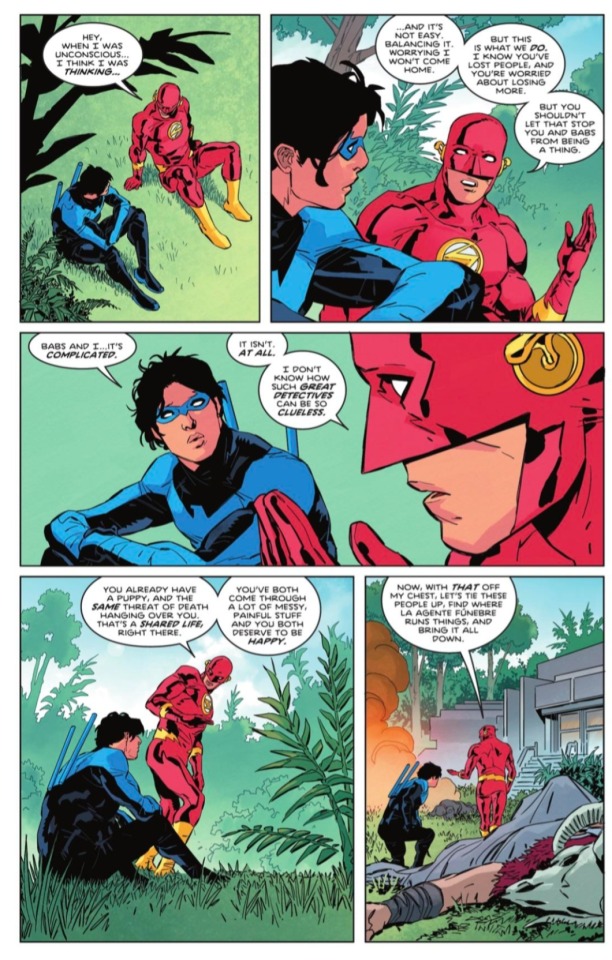
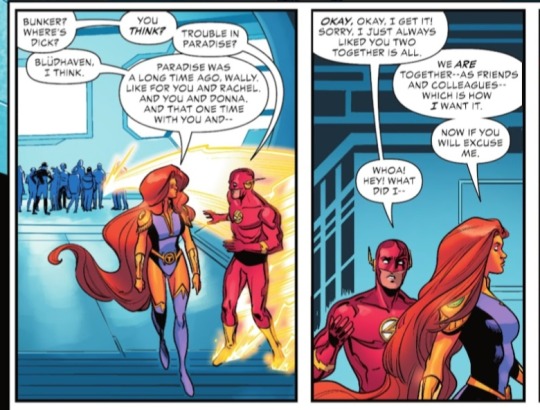
6. The concept of a woman teaching Dick to be more than just a hero
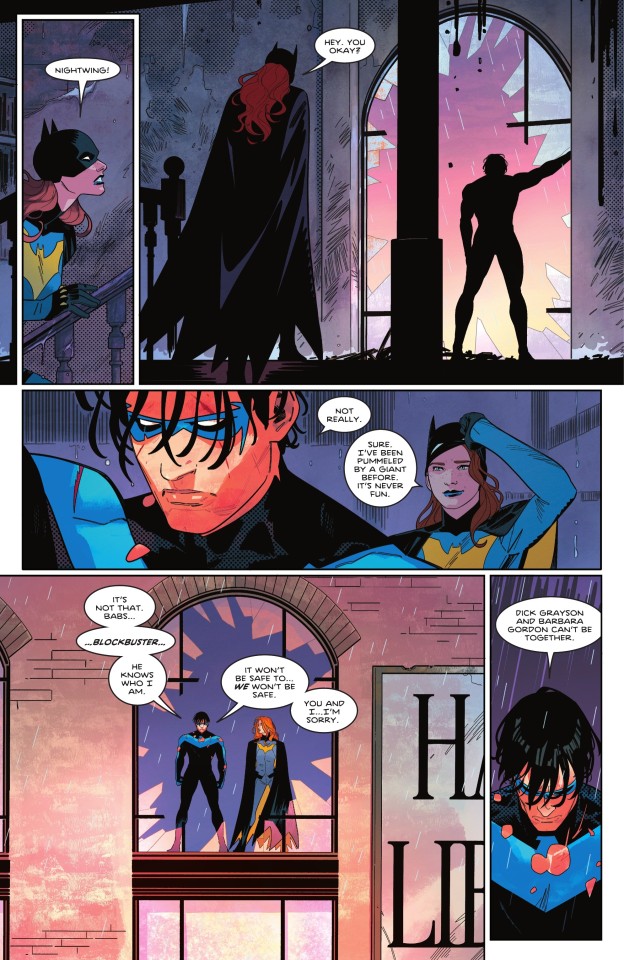
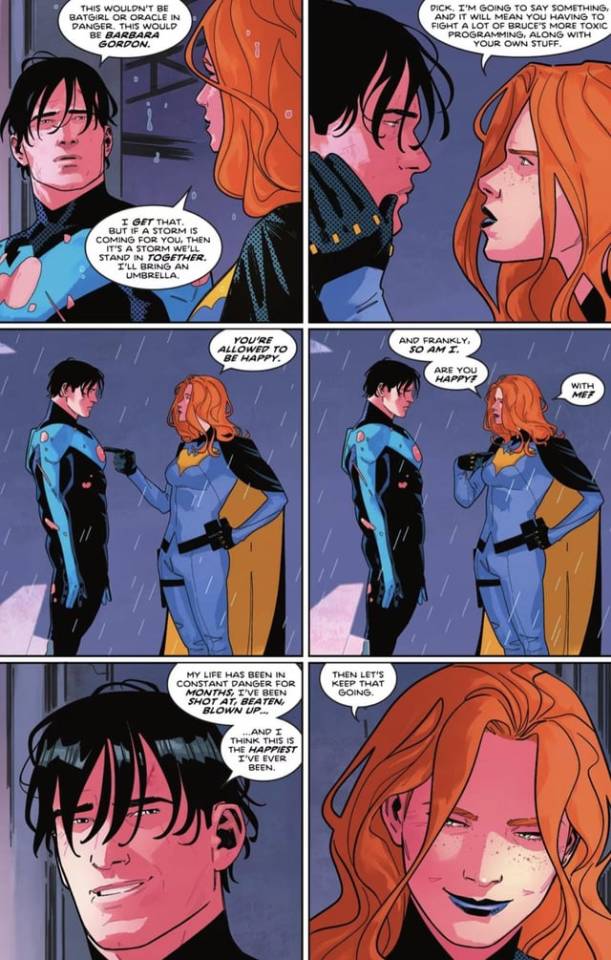

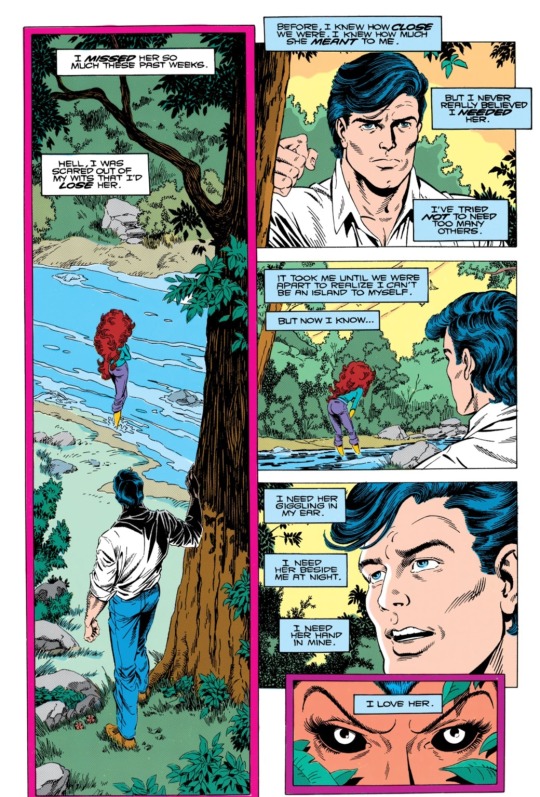
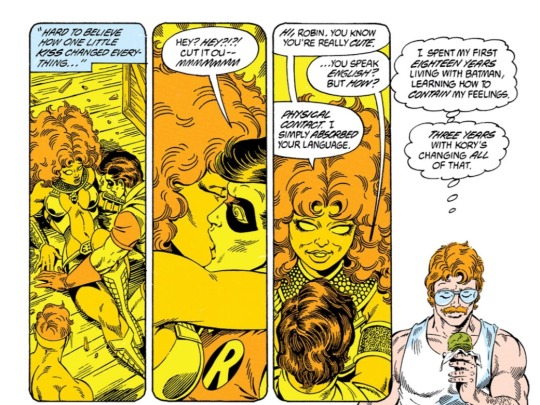

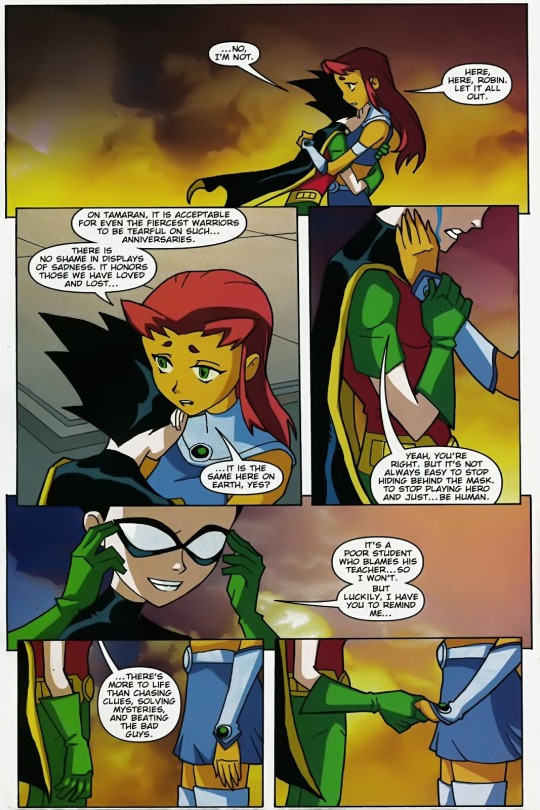
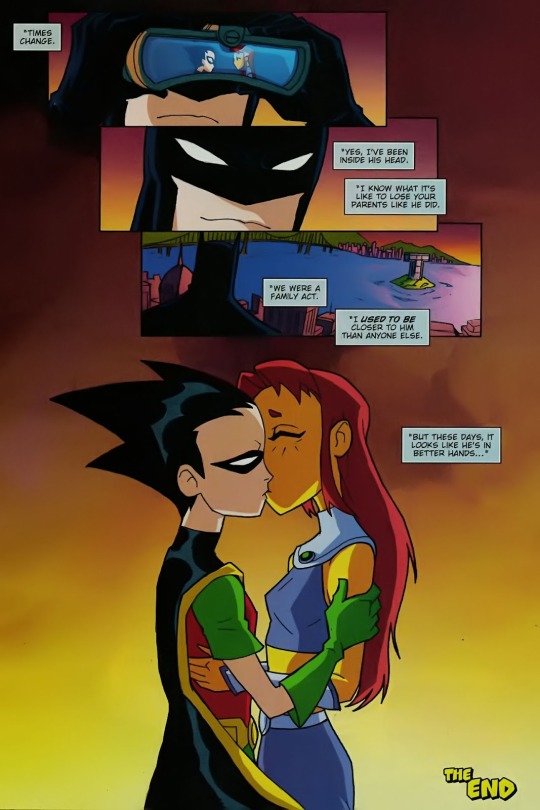
Seriously, Kory already taught him this 😭 She was literally the reason why he didn't become a Batman 2.0, He already learned the whole "you can be more than just a hero and be in a happy relationship" lesson from Kory.
But Tom Taylor just had to bring him back to square 1 so he can make Barbara say this to him too, making her act like Kory 💀 it's funny cuz Barbara never acted like this before, don't forget she was the one who keep rejecting him and making him feel bad for trying to be happy before 💀💀💀
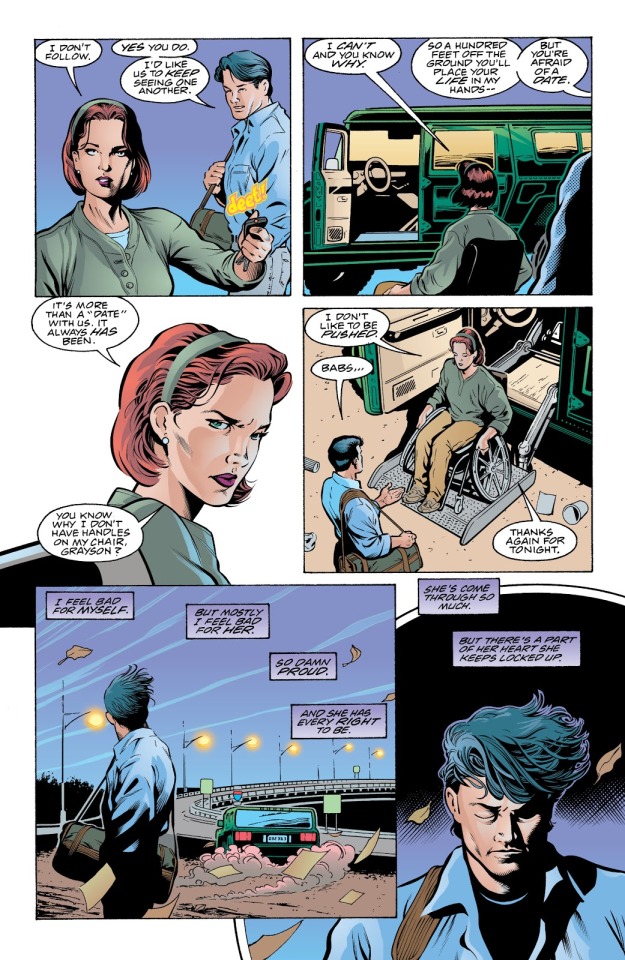
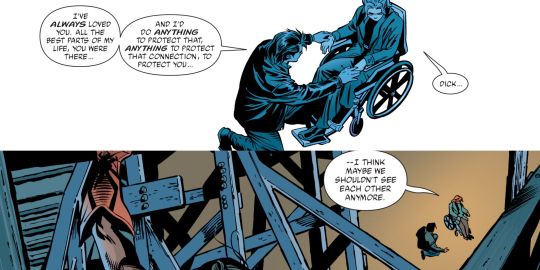
So yeah sorry if i'm being annoying about this, I might be wrong but even if i'm wrong it still doesn't make dickbabs original since dickkory writers and fanartist did these concepts first.
and tom taylor is known to be an obsessed dickbabs shipper who tried to have beef with dickkory shippers on twitter so copying dickkory content as a form of secret revenge sounds like something he would do 😬
#dickbabs#anti dickbabs#antidickbabs#dickkory#nightwing#batgirl#barbara gordon#starfire#anti tom taylor
192 notes
·
View notes
Text
A (Negative) Analysis of Tom Taylor's Nightwing Run - Who is Dick Grayson?
Introduction Who is Dick Grayson? What Went Wrong? Dick's Characterization What Went Wrong? Barbara Gordon What Went Wrong? Bludhaven (Part 1, Part 2) What Went Wrong? Melinda Lin Grayson What Went Wrong? Bea Bennett What Went Wrong? Villains Conclusion Bibliography
When asked to describe Dick Grayson’s character, many will say he is good. He is Bruce Wayne’s light, the person he could have been had someone offered Bruce understanding and guidance after his trauma. Dick is a leader. A big brother. A mentor. He is someone people can look up to, someone others can trust. He is “The Heart of the DCU.”

(Williamson, Joshua, writer. Sampere, Daniel; Herbert, Jack; Camuncoli, Giuseppe; Sandoval, Rafa, illustrators. Dawn of the DCU. Dark Crisis on Infinite Earth no. 7, e-book ed. DC Comics, 2022. pp. 28)
Characters, much like real people, are more than just a trait. Jason Todd is more than “angry.” Bruce Wayne is more than just “brooding.” Tim Drake is more than just “smart.” Characters are multidimensional. They have multiple facets, some of which may contradict one another because characters, just like people, are not created out of mathematical equations where two plus two always equals four. Humans are emotional. Their being is informed by past experiences, biology, culture. The intricate combination of these vastly different factors leads to inconsistency in rationality that may not always be logical. Dick being “good” does not mean that Dick can’t be angry, that he can’t make mistakes, or that he can’t lash out or be unreasonable, especially when stressed. Dick being “good” does not mean he can’t brood, does not mean he can’t be suspicious, nor does it mean he will always like everyone. Dick being “good” does not mean he can’t be his own worst enemy, that he can’t be calculative and strategic, that he always needs to be upbeat, or that he can’t be the most intelligent person in the room.
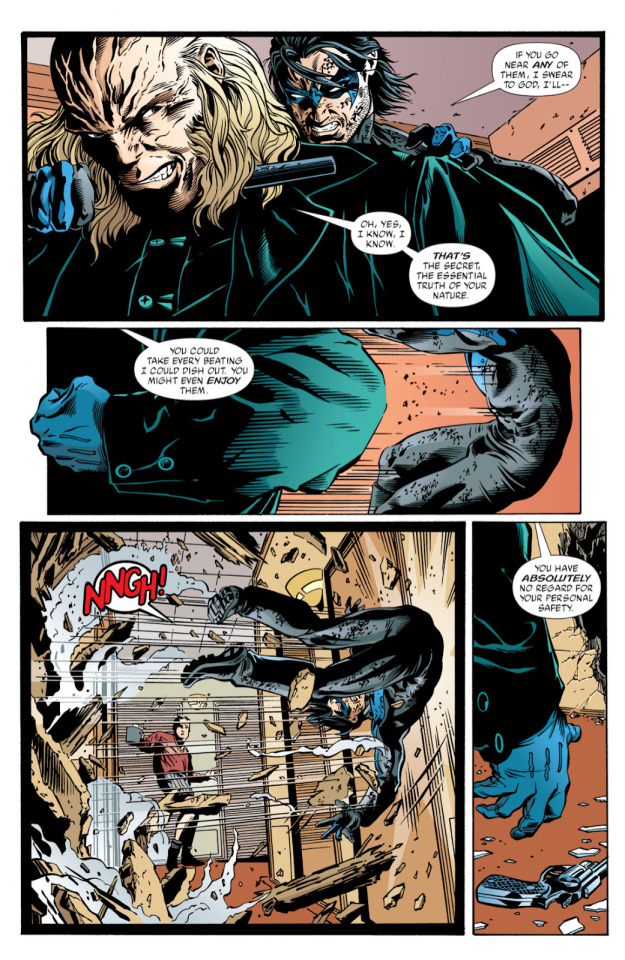
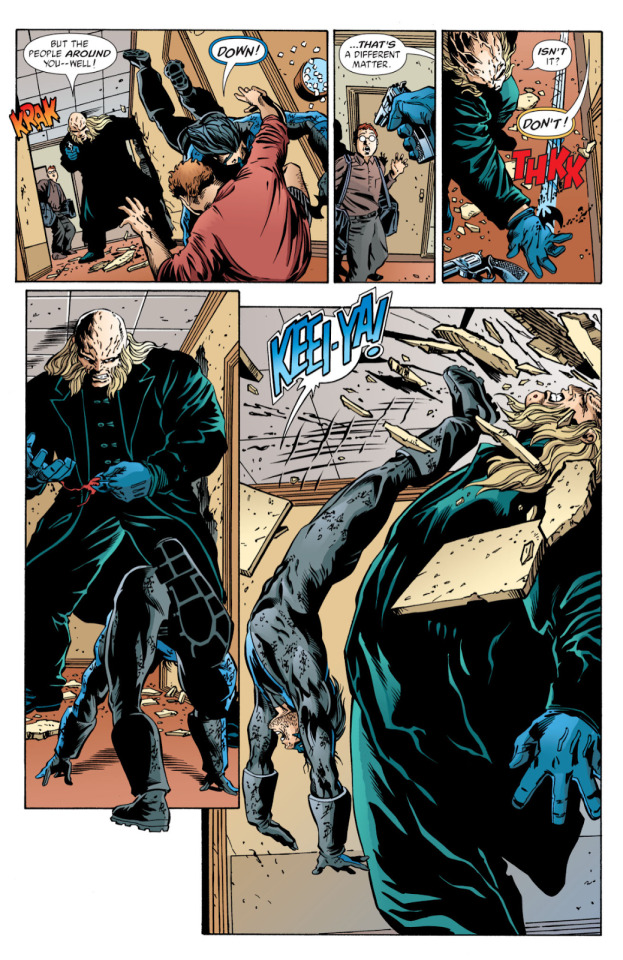
(Grayson, Devin, writer. Zircher, Patch, illustrator. Slow Burn. Nightwing no 93, e-book ed. DC Comics, 2004. pp. 10-11)
Sam Humphries also demonstrated this during his brilliant story, The Untouchable. There, Dick’s relentless determination to save people from the Judge’s machinations grows so intense that it becomes self-destructive. The story demonstrates how Dick’s “goodness” comes from a form of toxic perfectionism that has been with him since he was a child — a perfectionism born of a low self-worth that eats at him from the inside out
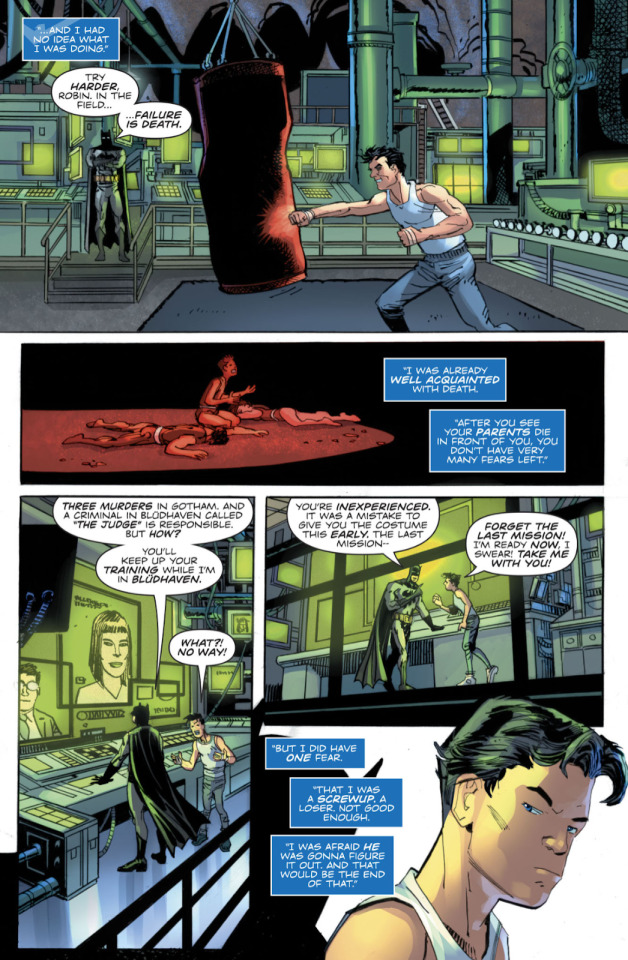
(Humphries, Sam, writer. Janson, Klaus; Campbell, Jamal, illustrators. Ruthless. Nightwing: Rebirth no. 37, e-book ed. DC Comics, 2018. pp. 08)
Even the 2003 animated series Teen Titans understood that in trying to catch the bad guy — almost always Slade Wilson in the case of that show — Dick could sometimes go too far.
Dick’s goodness causes him to see himself as a danger to not just his loved ones, but everyone who stands near him. He carries the world on his shoulders, taking the blame for every tragedy and seeing every death as a personal failure. When pushed to its worst, Dick’s goodness becomes an obsession which pushes others away, leading to isolation as Dick’s entire existence narrows down to accomplishing one specific goal.
It is this reductive characterization of Dick – the idea that his one defining trait is that he is “good” – that leads many to misunderstand the appeal of his character. As I mentioned above, characters are multi-facet, and Dick is no exception. However, the ways in which Dick is multi-facet are very different from the ways in which most characters are multi-facet.
Please do not mistake what I am about to say by claiming these other characters are not complex. Or even that some of them might not subvert popular tropes. What I mean saying is that Dick’s complexity is demonstrated differently than what I believe most people are accustomed to.
For example, everyone knows Bruce Wayne keeps his feelings locked up inside. He compartmentalizes his emotions and his trauma in order to solve the puzzle put ahead of him. But everyone – characters and readers alike – understands Bruce is doing this. Everyone can tell that he is hiding something from others and keeping them at a distance. The reader is always aware of how Bruce’s trauma informs his actions, his interactions, and his thought process.
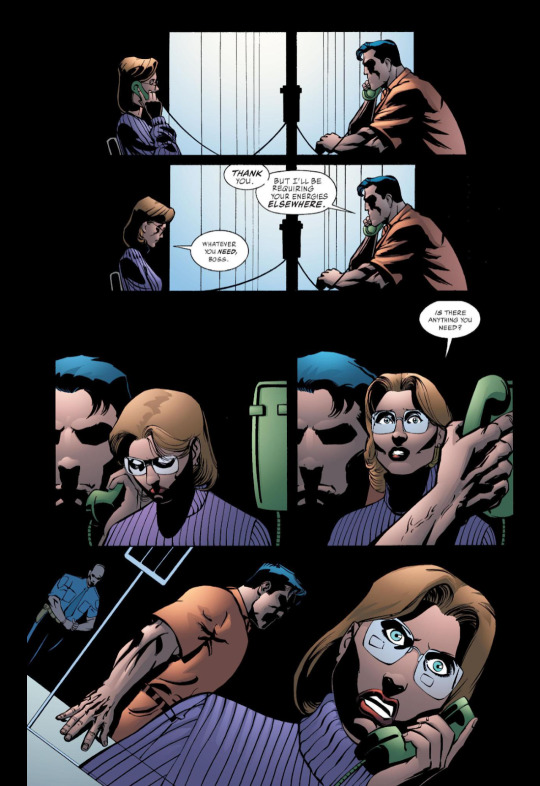
(Grayson, Devin; Barr, Mike W., writers. Davis, Alan; Robinson, Roger, illustrator. Procedure. Batman: Gotham Knights no. 25, e-book ed. DC Comics, 2002. pp. 20)
Take, for instance, Part One of Murderer/Fugitive. Although a major source of tension from the story surrounds the question of Bruce’s innocence, there’s never any question in the minds of the reader and the character that Bruce is hiding something. Tim Drake questions whether Bruce truly did kill Vesper Child and is hiding his motive, while Dick is certain of Bruce’s innocence and instead believes Bruce is hiding his alibi or the clues that would help them find the real murderer. Barbara Gordon, for her part, wavers between the two, but like Tim, Dick, and the reader, she is certain of one thing: Bruce Wayne is hiding something from her, from them… From us.
Similarly, Jason Todd’s anger comes from a place of hurt and a place of love, from insecurities and a need to prove himself. But like Bruce, all of that is clear to see. His anger and his hurt are simple to understand. Please, do not mistake this for me claiming that Jason is not a complex character — instead, I’m stating that his temperament, his trauma, and his actions are so interlinked that they are clear for the reader to see. His character, while rich, is more accessible. It does not take a lot of effort to know that Jason is angry because of what was done to him. It is easy to see that he is hurt because he equates Bruce’s love to the Joker’s death, and therefore sees Bruce’s failure to avenge him “proof” that Bruce does not love him as a son.
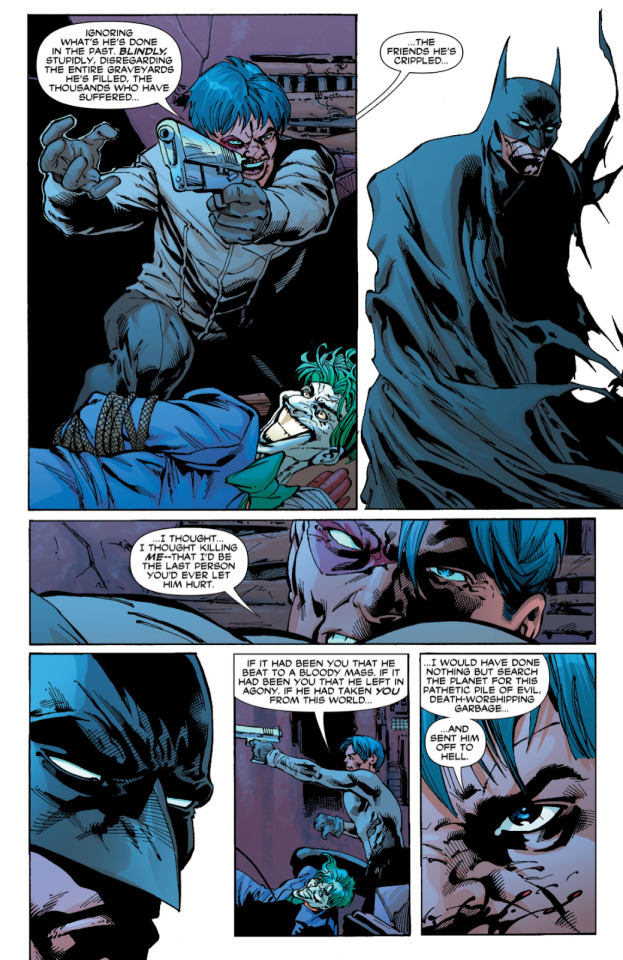
(Winick, Judd, writer. Battle, Eric, illustrator. All They Do is Watch Us Kill: Part 3: It Only Hurts When I Laugh. Batman no. 650, e-book ed. DC Comics, 2006. pp. 13) Dick, on the other hand, does not wear his emotions, his motivations, or his goals on his sleeve. Dick keeps his secrets not by constructing an impenetrable wall like Bruce, but through misdirection. This is why those who are unfamiliar with Dick misinterpret him so much. They take what is on the surface at face value because they do not have the character history to serve as context to understand what lies beneath As a Dick Grayson fan (From this moment forward will be referred to as Dick Grayson Fan A) said “good Dick writers teach readers how to read him and bad Dick writers just have that surface level interpretation.” (I was actually talking to her about this idea and how I’m presenting it in this essay. The example I gave was one she suggested after I asked if she could think of good moments that exemplified this idea.)
As an example, we can look at this moment from Grayson, in which Dick sucks a lollipop while receiving a mission assignment. Someone who is not familiar with Dick and is looking at Dick and Helena’s interaction might be easily fooled into thinking that Dick is the pretty, strong, but annoyingly childish and slightly dumb male character who contrasts the serious, intelligent, and highly competent woman. The characters’ expressions, actions, and the onomatopoeias are certainly leaning into that familiar trope.
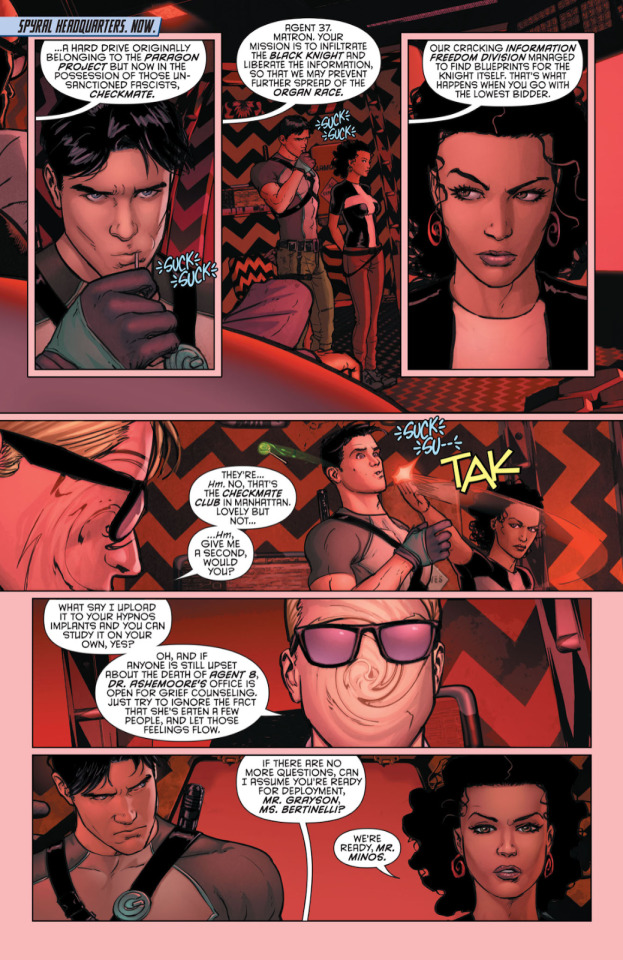
(King, Tom; Seeley, Tim, writers. Janin, Mikel, illustrator. The Raid. Grayson no. 04, e-book ed. DC Comics, 2014. pp. 02) However, Dick Grayson fans know that when it comes to the mission, Dick is as serious as Batman himself. Highly intelligent, Dick is considered to by many the world’s second greatest detective (there are many instances in canon when he is referred to as such), making him more than just a pretty face who knows how to fight (It should be noted that in this tweet, writer Tom King also ranks Dick as the second best fighter in the Bat Family). Furthermore, context matters. Dick is deep undercover throughout the duration of Grayson, and this scene is set shortly after the death of one of the agents of the organization Dick has infiltrated. In other words, Dick is in a highly stressful situation without allies to provide him with back-up or emotional support.
His posturing in this scene, then, can be seen as an attempt to misguide and misdirect. He does not wish to let those around him – people he is not sure yet if he can trust – know the full extent of his capabilities or perceive any potential weaknesses in his value of human life. Positioning himself as the annoying and childish pretty boy who does not pay much attention to serious matters is a strategic choice that his fans readily pick up on.
That is not to say that Dick’s smiles are all lies. Rather, Dick’s upbeat nature is a natural aspect of his personality that he will exaggerate depending on the setting in order to keep his privacy. He is a natural performer, a showman, and so he utilizes misdirection to his advantage.
A classic example of Dick’s misdirection and how he is misinterpreted by others is how some would characterize him as an “attention seeker.” However, the term “attention seeker” has negative connotations as it implies someone who seeks the spotlight at the expense of others.
That is the opposite of who Dick is. But that’s not Dick is. As a mentor, a leader, and an older brother, Dick will often invite others to join the conversation. He pays attention to what they say, he strategizes based on their needs.
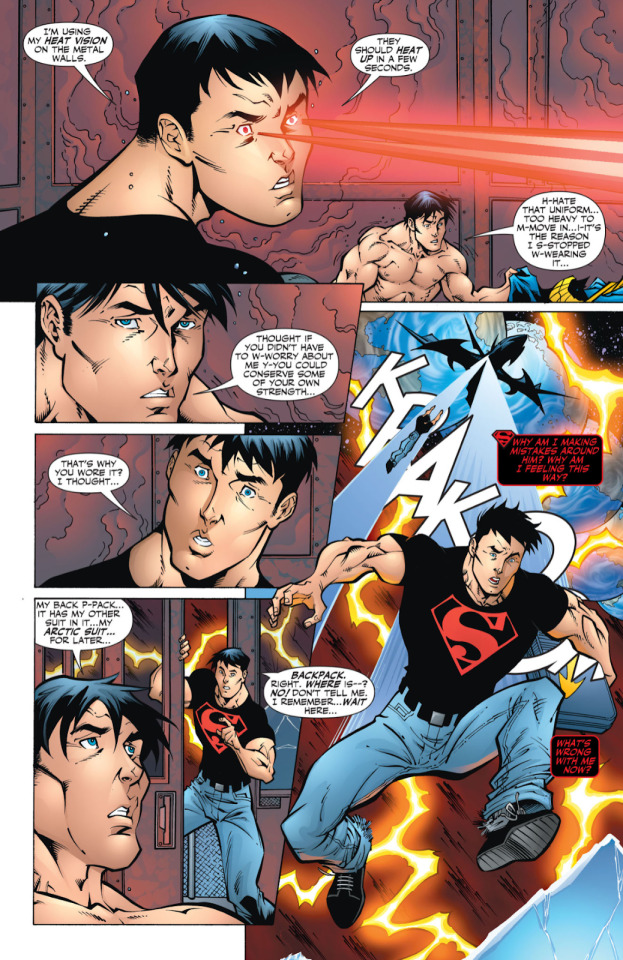
(Johns, Geoff; Wolfman, Marv, writers. Nauck, Todd, illustrator. The Brave and the Bold. Teen Titans no. 33, e-book ed. DC Comics, 2006. pp. 15)
Simply put, Dick is incredibly empathetic and always in tune with those around him. This is why he works so well as both a Bat and a Titan, and why his personality in each team is so distinct. As a Bat, Dick is often portrayed as cheerful, his bad puns are meant to cut the tension, the is the shoulder for his family to cry one; as a Titan, Dick is a leader, he is a strategist, he demands others take things seriously and will not tolerate slacking off, he is trying to instill good work ethics and ensure that the team dynamic stays in top shape.
As JL Bell writes in their essay Success in Stasis: Dick Grayson’s Thirty Years as a Boy Wonder for the book Dick Grayson, Boy Wonder: Scholars and Creators on 75 years of Robin, Nightwing, and Batman explains, “in contrast to how Robin behaved with Batman. [Dick] is usually [the Titans’] serious leader.” (Bells, JL “Success in Stasis: Dick Grayson’s Thirty Years as a Boy Wonder.”Dick Grayson, Boy Wonder: Scholars and Creators on 75 years of Robin, Nightwing, and Batman edited by Kristen L. Geaman, McFarland & Company, Inc., Publishers, 2015, pp. 22)
That is because Dick knows that when he is with his family, he needs to play one role, and when he is with his friends, he needs to play another. The Bats have their strengths, so Dick adjusts himself to play up on those strengths while also making up for its weakness. Same thing with the Titans.
Mark Waid perfectly exemplifies Dick’s adaptability when portraying him in his World’s Finest (2022) and World’s Finest: Teen Titans (2023). There, Dick brings levity to his work with Batman and Superman, keeping an upbeat attitude while still taking the job seriously.
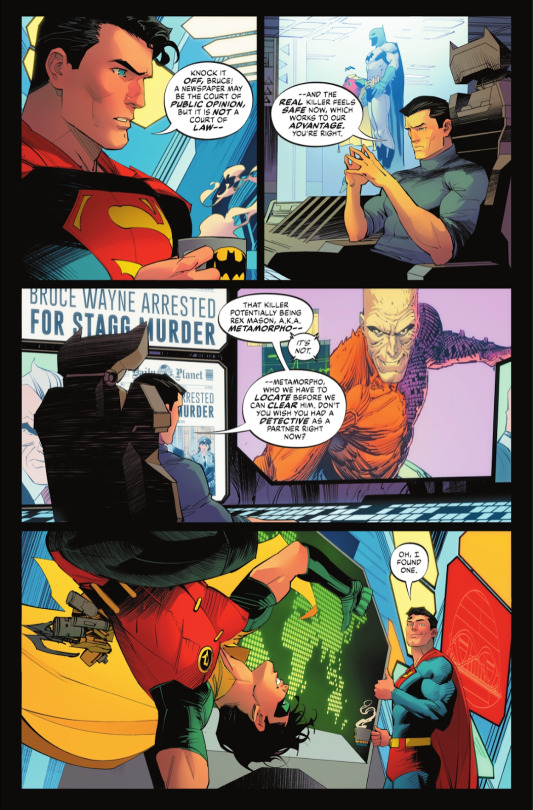
(Waid, Mark, writer. Mora, Dan, illustrator. Manhunt. Batman/Superman: World’s Finest no. 14, e-book ed. DC Comics, 2023. pp. 07)
Yet, when he is with the Titans and feels the weight of leadership on his shoulders, he is more serious, being the one to get the Titans to focus on their objective, getting them to look at the big picture, while also making the most of their abilities as individuals and as a team.

(Waid, Mark, writer. Mora, Dan, illustrator. Team Spirit. Batman/Superman: World’s Finest no. 08, e-book ed. DC Comics, 2022. pp. 05)
So yes, Dick is a performer, a showman, but he is not “attention seeking.” In fact, his use of misdirection illustrates that Dick is a very private person. And how could he not be? While it is true that Dick grew up in the circus, after his parents’ death, he went to live with Bruce, and in doing so, was put into an intense amount of public scrutiny. The murders of John and Mary Grayson happened on a literal stage with dozens of people watching. As a result, Dick’s very private tragedy became a spectacle.
After the death of Dick’s parents, Dick isn’t allowed to disappear into anonymity. He is not afforded privacy to grieve. He is taken in by Bruce Wayne, Gotham’s most famous playboy, billionaire, philanthropic who is also a bit of a selfish airhead (at least, that is how the public perceives him), and as a result, Dick is subjected to an immense amount of public scrutiny, not just from the media, but also from Gotham’s elites, and even his peers at school. Not only that, as Robin, the Boy Wonder and the first ever sidekick, Dick also is put on the spotlight while also being aware of the necessity of keeping secrets.
As a result of having his tragedy broadcasted and having a new mission that requires secrecy, Dick becomes a very private person. He is not an open book; instead, he is meticulous about what he shares and he prevents people from looking at what is not of their business by using his showmanship.
Furthermore, Dick’s role as a performer who, as Joshua R Pangborn describes in his essay about the Robin costume, “experiences […] the full spectrum of emotions, each and every night, for the catharsis of others,” transforms him into a literal vehicle for emotional catharsis and empathy. (Pangborn, Joshua R “Fashioning Himself a Hero: Robin’s Costume and its Role in Shaping His Identity”Dick Grayson, Boy Wonder: Scholars and Creators on 75 years of Robin, Nightwing, and Batman edited by Kristen L. Geaman, McFarland & Company, Inc., Publishers, 2015, pp. 42) In their essay, Bell argues that while Bruce Wayne embodied “the mid-century ideal of the American male,” who is always “in control of his feelings, not letting them overcome his judgment nor displaying them broadly,” Dick Grayson “can express deep emotions, not only his own but Bruce’s.” As such, Dick often acts as a sounding board for his family, friends, team, and romantic partners. As a performer, Dick embodies whatever persona is necessary to create a safe environment where others can process their emotions and achieve catharsis. (Bells, JL “Success in Stasis: Dick Grayson’s Thirty Years as a Boy Wonder.”Dick Grayson, Boy Wonder: Scholars and Creators on 75 years of Robin, Nightwing, and Batman edited by Kristen L. Geaman, McFarland & Company, Inc., Publishers, 2015, pp. 12)
Dick's performance, then, comes not just from a desire for privacy but also from a deep place of empathy. It comes from a desire to help others work through their own stories. This is why he can step into other's narratives without overshadowing them. In fact, he’ll often elevate those characters by complimenting them and creating the circumstances needed for them to shine. As a performer, Dick is naturally adaptable and always willing to fill the role necessary to create the space required for others to work through their emotional needs.
But, as with everything, Dick’s performance is also a result of his destructive perfectionism. Dick equates “good” to “perfect.” He believes that he can only be wanted by Bruce if he is the perfect Robin, he can only be wanted by his friends if he is the perfect leader, he can only be wanted by his siblings if he is the perfect older brother, he can only be wanted by his partners if he is the perfect boyfriend. As Humphries’s The Untouchable demonstrates, because Dick was raised in an environment where failure could be fatal, he internalized these stakes to every aspect of his life.
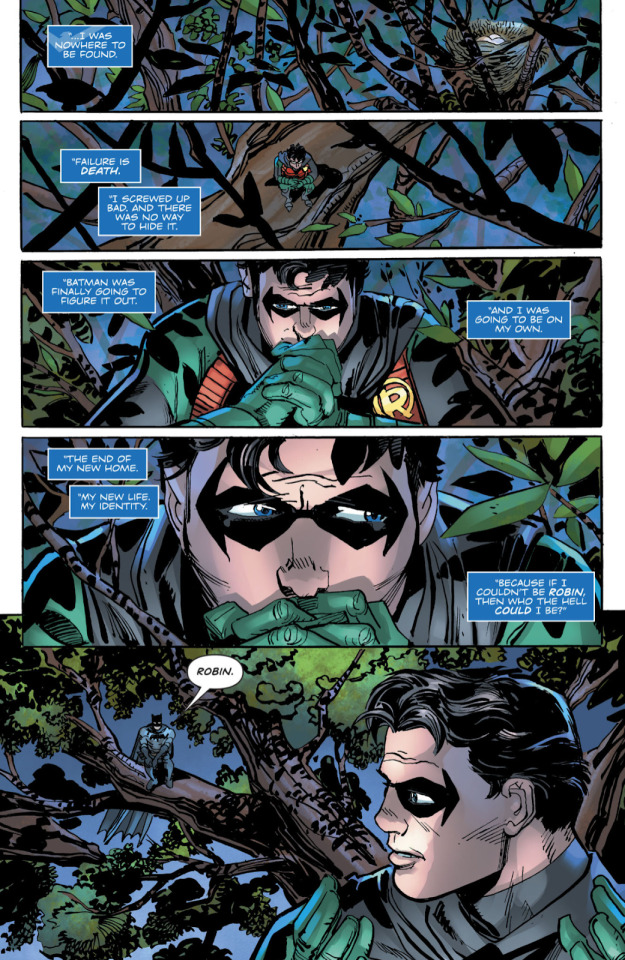
(Humphries, Sam, writer. Janson, Klaus; Campbell, Jamal, illustrators. Ruthless. Nightwing: Rebirth no. 37, e-book ed. DC Comics, 2018.pp 20
And it doesn’t help that all of the people in Dick’s life do prove that assertion right. Everyone holds “the Heart of the DCU” to an impossible standard that, when Dick fails to live up to it, he is crucified and punished for it. If he tries to be perfect, he's told off for being the Golden Boy, but if he fails to be the Golden Boy, then he is told off because he let people down when they were relying on him. Ironically, this is done by characters in-universe real-world fans. As Dick Grayson Fan A pointed out in a discussion about depiction of Batman Family members killing their antagonists, “there's always this pressure to have Dick ~fall from grace~ and I do lowkey resent that. Dick should be allowed to be good, not punished for it.”
This creates an environment where Dick constantly needs to maintain perfection in order to be in everyone’s good graces. Failure is not met with understanding and comfort, but with punishment. No one expects him to fail, no one likes when he fails, no one forgives him when he fails. That also means that Dick doesn’t feel safe opening up about his insecurities because to do so would mean “proving” he cannot stay on the pedestal he’s been put on. And so, he is forced to perform the role of a “perfect good guy” by using misdirection so people won’t abandon him for being human (this was said during a very interesting discussion and addressed both canon and fanfic writers. There’s a lot that can be said about Dick’s parentification and how that is viewed in the context of fandom. This is not the essay for it, and, to be perfectly honest, I’m not entirely sure I’m the best person to open said discussion).
Taylor does not portray Dick as someone with this many layers. Taylor’s Dick is perfect simply because he is good. He is the perfect friend, who is always happy to support others. He is Barbara Gordon’s perfect boyfriend. Dick is the perfect older brother, the perfect son, perfect model citizen.
But by equating being “good” with being “perfect” without exploring the negative consequences that come from such pressures, Taylor robs Dick of the emotions that humanize him. In Taylor’s run, a good person will not be angry at their friends, will not be frustrated with their siblings, will never disagree with their romantic partner. This strips Dick of all of his nuances, and instead reduces him to a non-descriptive “everyman hero” with a limited emotional range whose only narrative purpose is to serve as a blank canvas for readers to project themselves into.
Simply put, Taylor is uninterested in writing Dick as a character because he does not see value in Dick for who he is. Nightwing #105, which removes Dick from its story in order to allow its readers to “be Nightwing” illustrates how Taylor and DC at large only value Dick his connections, not for who he is.
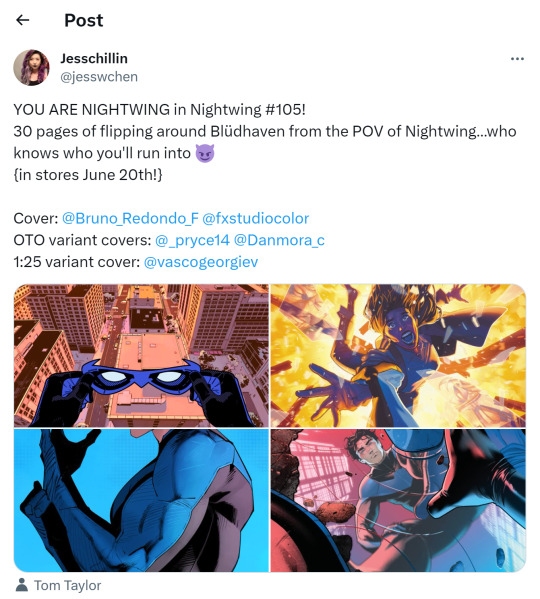
(Chen, Jess [jesswchen]. “Tweet Message.” 18 March 2023, https://twitter.com/jesswchen/status/1636971185782259716?s=20.)
Be Dick, and you can be good friends with Superman! You can be Batman’s son! You can be Batgirl’s boyfriend! Robin’s big brother! Flash’s best friend!
As a Dick Grayson fan, this feels insulting. I’m not saying Dick needs to be anyone’s favorite character, or that anyone even needs to like him. I’m not interested in dictating anyone’s taste. But to someone who loves Dick Grayson, it is insulting to think that those responsible for his stories fail to see his value. To Taylor, the person who, as the writer for both Nightwing and Titans, has the most control over Dick’s portrayal, Dick is nothing but a tool that will soon wear off its use.
In treating Dick as such, Taylor and DC send a clear message to those of who love Dick, and that message is that the things that make Dick special, the things that made us love him, do not matter.
For his near century long existence, Dick served as a stand in for those who feel othered in society. While I do not have the time to go into a gender studies and queer reading of Dick, it is notable that his character often spoke to many people who felt different. As Mary Borsellino’s 2006 essay “A lot like Robin if you close your eyes” Displacement of meaning in the Post-Modern Age explains:
The things which a Robin-like figure can contain, but which are cut off from being embodied by Robin himself, lose none of their importance simply because they are rejected by a restrictive, corporate-controlled status quo […] It's worth inspecting what was excised from Robin, and charting where these elements instead found articulation: in those from lower socioeconomic backgrounds; non-White people; young single parents; and HIV positive people. And, especially, girls and women (Borsellino, Mary “‘A lot like Robin if you close your eyes.’ Displacement of meaning in the Post-Modern Age, 2006)
While Borsellio’s essay focuses on the Robin mantle, as the creator of said mantle, such assertions can also be applied to Dick. In fact, Bell concurs with the idea that those who were othered have always took a preference to Dick when stating that “Robin’s status as the littlest guy in the fight increases the character’s appeal for some children, especially the ‘youngest and weakest.’” In other words, it is crucial to Dick’s character that he is not an “everyman hero.” He is not the hero of or beloved by the average individual, but rather by those who were ostracized by society.
Taylor’s writing exemplifies the “restrictive, corporate-controlled status quo” imposed by DC that Borsellino speaks of. His characterization is the manufactured image that removes Dick’s “socially deviant/rejected” qualities his fans loved about him so that he can be palatable to a more mainstream audience. (Bells, JL “Success in Stasis: Dick Grayson’s Thirty Years as a Boy Wonder.”Dick Grayson, Boy Wonder: Scholars and Creators on 75 years of Robin, Nightwing, and Batman edited by Kristen L. Geaman, McFarland & Company, Inc., Publishers, 2015, pp. 11)
This, of course, is not necessarily new. As Mason Downey argues in their 2015 essay In Defense of Dick Grayson: Objectification, Sexuality, and Subtext, DC has often struggled between leaning into the audience Dick has and wanting to erase any “othering” elements from his character. As they point out:
The more sexual and idealized Dick was allowed to become, the more attention he got from female and queer fans, the more the industry had to work to combat the past anxieties revolving around the character. This resulted in more and more heteronormative romances for Dick on the page. We can’t grant Wertham’s fears any legitimacy, we can’t make these stories “for girls.” Writers did so in a few ways, some obvious, some less so. On the page, we had Dick’s deflection of female sexuality that he was not in control of, and we had a level of emotional posturing with relationships he was in control of. We had moments where we saw him manipulating with or being manipulated by sex. There were editorial pushes to lean into Dick’s popularity with women and queer men coupled with the simultaneous desire to not acknowledge or grant legitimacy to the fanbase he found in those demographics. This translated to more sexualized poses. More pin-up style spreads. Multiple bait-and-switch wedding, marriage, and relationship teases which turned out to be fakeouts or got written out. Long strings of female side characters were introduced exclusively to be love interests. Off the page, we had more concrete examples. We saw a lack of merchandise and lack of representation of him in other forms of media. There was a pervasive hesitancy in broaching his existence outside of the spheres of already established fans. For example, Nolan’s The Dark Knight Rises featured Joseph Gordon-Levitt playing a character literally named Robin, who was invented for the film franchise rather than allowing Dick himself to exist in that cinematic universe. Dick Grayson is a character built upon one repeated mantra aimed at what eventually become two of his largest demographics, “Remember, this is not for you.”
(Downey, Mason “In Defense of Dick Grayson: Objectification, Sexuality, and Subtext” Women Write About Comics. December 2015)
What makes Taylor’s run unique is that in trying to have Dick tackle social issues such as homelessness and in trying to create a class commentary, Taylor attempts to create a progressive, albeit simplistic, veneer while erasing the important and “other-ing” aspects of Dick’s character that was so beloved by his fans.
This, I believe, is one of the many explanations why many of those who praise Taylor run claim that this is the first Nightwing run they ever enjoyed, while many (though admittedly, not all) those who have been longtime Dick Grayson fans feel betrayed and frustrated by the way their beloved character is being handled. Dick is currently being appropriated into a more mainstream, palatable hero. He is being taken from those who loved him and being scrubbed clean to be suitable for an audience who could not appreciate him for what he was, only for how his connections could give them a wish fulfillment fantasy. As another Dick Grayson fan expressed:
I see no heart in [Taylor’s] work, only soulless marketing. He sells himself as something good and work on his perfect public image and everyone who disagrees is wrong and it gets on my nerves like nothing else. […] I wouldn't be as salt[y] if Taylor was genuinely trying to writing something good. I don't have the heart to [be salty] at someone working with passion, even if I don't like it.
(Henceforth referred to as Dick Grayson Fan B... This was actually said during a discussion in which we expressed how we wish we could be as excited about Taylor’s run as many others are.)
315 notes
·
View notes
Text
People that should fill in as Nightwing instead of Bruce
Tim Drake
Tom King's original pitch for after Dick got shot was Tim being Nightwing for about 12 issues. The story would have themes of brotherhood. Instead we got the Ric Grayson arc. Could be a cool idea to revisit.
Duke Thomas
We need more Duke, in the Nightwing run and in general. I feel like he would really understand Nightwing as a mantle.
Duke was afraid of heights and has a mentor who doesn't like heights (Black Lightning,) so he could fit well in this arc where Dick's afraid of heights.
And it's not like Tim or Bruce are gonna pass for Dick's Nightwing either.
Jason Todd
Fun reference to Brothers In Blood. But this time Dick asking him to fill in for him, symbolizing trust and how their relationship has grown.
Jason can also canonically do flippy, acrobatic fighting moves.
#dc#dc comics#comic books#comics#media analysis#character analysis#comic analysis#media commentary#my commentary#story ideas#comic ideas#fic prompt#batfam#batkids#batfamily#batboys#nightwing comics#dick grayson#nightwing#jason todd#red hood#tim drake#robin#duke thomas#the signal#anti tom taylor#the red hood#red robin#signal#batbros
250 notes
·
View notes
Text
Taylor Swift loves ripping off culturally important works- because she hopes it will lend legitimacy to her own art- yet she falls short of ever really living up to the creativity of the people she rips off.
Literally making me angry that Taylor Swift is blatantly ripping off the play "Who's afraid of Virgina Woolf?" with her stupid, self-centered song "Who's afraid of Little Old Me?"
Did she think no one would notice?
It's not an allusion- there's no real thematic link. She's literally just stealing ideas.
Please- no one tell her about the play "Rosencrantz and Guildenstern Are Dead" I won't survive her rip-off of that banger.
#anti taylor swift#ttpd#ex swiftie#taylor swift criticism#taylor swift critical#who's afraid of virginia woolf?#whos afraid of little old me#english lit student#play#the tortured poets department#anti swifties#rosencrantz and guildenstern are dead#shakespeare#tom stoppard#edward albee#I'm a professional Taylor Swift Critic
102 notes
·
View notes
Text

Literally begging Tom Taylor to stop cooking. He's already burnt down the kitchen and the house and the garden outside. It's just one crazy ass plot twist after another. What do u mean the truth of Dick's parents' deaths. What do u mean Bruce is Nightwing. Tom Taylor what the actual fuck are you doing fam. I thought we were done but he truly had to disappoint me one last time. Couldn't let it lie. Fuck.
#DC#DCU#DC Comics#Dick Grayson#Nightwing#Bruce Wayne#Batman#Robin#Robin I#My meta#Anti Tom Taylor#Delete later
123 notes
·
View notes